A Guide To The Best Art-Inspired Destinations In The US
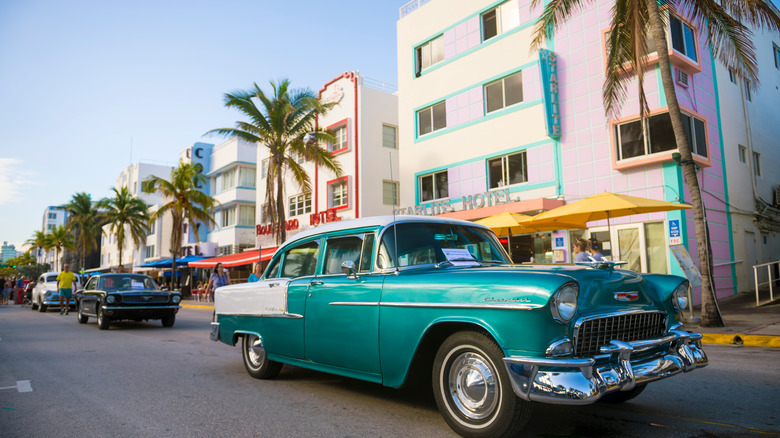
One of the coolest things to do when traveling to a new place is to check out the art scene, and some U.S. cities have such an inspiring art presence that they are worth experiencing fully through the lens of such creativity. The United States, being the melting pot that it is and massive to boot, is a smorgasbord of traditions and heritage. With culture being heavily linked to different art styles, it only makes sense that cities with the most cultural foundations would have large art presences. The exploration of great art can certainly take you places you wouldn't first expect, though.
Finding great art anywhere isn't hard – wherever there are people, creativity can be found. However, some cities are teeming with beautiful and unique finds, and we've scoured the United States for some of the very best art installations and experiences for travelers who love an art-centric vacation. From world-renowned cities that are impossible to escape notice to small towns you may have never heard of, here are some of the very best places to visit for a colorful and art-filled bucket list vacation.

Best city for tattoo collectors
Richmond, Virginia has one of the highest rates of tattoo shops per capita in the country (via The Box Houston ), beat out only by two high tourist cities that likely have a high number of shops geared toward visitors rather than residents. You'd be hard-pressed to find a Richmonder without at least one piece marking their skin, and the college city takes their ink very seriously with little to no gimmicky shops and many celebrated and renowned artists residing there. For travelers who are looking to add a little ink to their collection on vacation – especially of the traditional variety – a trip to Richmond should be highly considered.
Shops like Hold It Down Tattoo , a hidden gem found in a cobblestone alley near the Virginia Commonwealth University campus, and Heroes & Ghosts Tattoos in Richmond's popular Carytown are home to various popular artists with different styles. While most artists in the city have a style all to their own that is noticeably unique and desirable, artists like Josh Stephens and Two Pillars owner Charles Berger are stand-outs for their bold and specialized style choices.
Richmond is also home to the world's longest-running tattoo convention, which celebrated its 29th anniversary in 2022 . Over 100 artists participate in the Richmond Tattoo, Art, and Music Festival and people come from all over to get tattooed at the convention, making it a great time to visit the heavily tattooed city.
Best open-air art scene
Detroit, Michigan has had a bad rap for quite some time with a high violent crime rate , but it is back on its feet and has become something of a haven for young people and artists. Art and innovation have sprung out of pure grit and willpower as the people take back Detroit , making what is still one of the nation's poorest cities into one of the coolest as well, rich in culture and creativity. The poverty still heavily present in the city should not be taken lightly when visiting, though. The city, as well as its many longtime residents, should be shown the utmost respect by tourists coming to awe at their home and creations.
It's easy to spend a few days in Detroit just visiting the various outdoor art installations and murals, and following Visit Detroit 's weekend art tour itinerary will take you along a journey that visits a lot of what the city has to offer in way of inspirational experiences. One of the best ways to experience the art scene and really understand the scope of how far Detroit has come back is by visiting The Heidelberg Project , an outdoor art display that strives to rehabilitate the area by turning vacant lots into environments of art. Detroit isn't a city to overlook, especially when it comes to its art scene.
Best city for affordable and awe-inspiring art
Surprisingly, one of the most affordable U.S. cities to travel to also happens to contain some pretty amazing and jaw-dropping art installations. Many travelers visit Philadelphia because of the city's ties to American history, as it is sometimes referred to as the birthplace of the United States. For art lovers, though, Philly is also a pretty great city to see, as the entire city is peppered with breathtaking visuals.
One of the most striking and visually stimulating attractions in Philly is the Magic Gardens , which is a huge mosaic art piece and gallery that spans three city lots. The immersive art experience was first created by artist Isaiah Zagar in an effort to revitalize the South Street neighborhood of Philadelphia, which became a solid contributor to the city's art and revitalization period known as the South Street Renaissance . The wildly creative behemoth of a mosaic collection is a must-see for anyone visiting Philly, but certainly a point of focus for art lovers.
Philadelphia's Mural Mile is also a near-free attraction that has many impressive art styles on display. Travelers can take self-guided tours of all the important murals that use the city as a canvas. With over 4,000 murals crafted thanks to Mural Arts Philadelphia and local creatives who continue to fill the city with artwork, there is plenty to see when exploring the vast city.
Best cities for art museum-goers
New York City and Washington D.C. both contain some of the best museums in the United States, especially when it comes to art. With New York City being such a diverse and populous city and D.C. being the capital of the country, it makes sense that some of the most well-known art museums would reside within their limits. Both cities honor various styles and historic periods of art within their many art museums and galleries.
New York City is home to the Museum of Modern Art – popularly known as the MoMA – and The Metropolitan Museum of Art , both of which are revered as two of the most admired art museums in the world . The Met, of course, is popular for its annual Met Ball , which is basically an elaborate and upscale costume party where the most well-known celebrities wear designer outfits that reflect the year's theme. The MoMA holds some of the most influential contemporary and modern art in history. Van Gogh's "The Starry Night," arguably the single-most well-known and beloved modern painting, is among The MoMA's inhabitants , as well as paintings by Frida Kahlo, Picasso, and Andy Warhol.
Washington D.C. boasts a whole lot of museums and is home to another of the world's most beloved art museums: the National Gallery of Art . The museum hosts work from artists like Leonardo da Vinci, Monet, and Van Gogh and, better yet, is free for all to visit.
Best city for interesting and unique architecture
While cities like New Orleans and New York City are known to have amazing architecture throughout, Miami, Florida is an unexpected wonder when it comes to stylized buildings. The Art Deco Historic District is home to a number of striking buildings that showcase the Art Deco style of the 1920s, '30s, and early '40s, as well as Miami Beach's most iconic street, Ocean Drive. Movie buffs will recognize some of the striking art deco buildings from various iconic films, like "Scarface" and "Miami Vice" – it's hard not to notice how the style of architecture affected the films' whole vibe. Iconic buildings in this district like The Carlyle and Park Central Hotel with their extravagant yet subtly comfortable design are huge jewels in the crown of Miami's South Beach.
Art Deco isn't the only beautiful design choice that designers made in Miami, though, as the city boasts a pretty hefty presence of Mediterranean Revival-style buildings as well. This style pops up in many of Miami's neighborhoods, among the most famous of these buildings are The Alamo and The Freedom Tower . No matter the style, though, Miami's architecture is timeless and the diversity of its stylized buildings paired with how well the city pulls them off makes it a perfect city for art lovers to enjoy.
Best city for art festivals
Charleston, South Carolina is a Mecca for artists, and both they and their creations come in all shapes, sizes, and styles. The southern city is home to a number of annual art festivals that bring in artists from all over. Whether travelers are interested in adding to their art collections or just experiencing a wide array of artists and styles, attending one of Charleston's art festivals is a great addition to any art-led vacation.
One of Charleston's most anticipated festivals is the annual North Charleston Art Fest , a five-day festival that features not only the visual arts but a wide variety of art mediums. Similarly, the Moja Arts Festival uses different art forms to celebrate African American and Caribbean cultures and the harmonization of the many cultures that influence Charleston. For travelers more interested in music and the performing arts, Charleston's Piccolo Spoleto Festival delivers beautifully in these directions.
Festivals in Charleston are a community affair, but they also are open and welcoming to tourists who want to partake in what the many artists and creators have to offer. For being a decently sized city, Charleston still feels like a small town with its emphasis on community, the fast-paced art festival scene speeds things up in the city, making it a bustling and exciting area for creative-minded travelers to enjoy.
Best cities for guerrilla art
Graffiti and unexpectedly placed art can be found all over, specifically in highly populated cities. Naturally, New York City has a huge guerrilla art culture that can be seen in pretty much every neighborhood in the big city, like The Bushwick Collective . Local contributors as well as artists from all over the world have taken part in the massive art project that is made up of almost 100 blocks of murals and large-scale art pieces. Travelers can take a short, pay-what-you-want walking tour to see all the project has to offer.
Los Angeles is another city in which guerrilla art is heavily ingrained in the culture. Street art and graffiti have made quite a transformation over the years in L.A., and artists throughout the city are doing some pretty great things in terms of large-scale murals – a lot of which have deeper meanings than just beautifying the city. There are numerous areas that have a dense presence of beautiful and sometimes thought-provoking images, but The Arts District and The Container Yard are two that speak to the diversity of Los Angeles' street art styles, as they both display a vast number of differing works.
Graffiti has been around for a long time as a means of public creative expression. Murals have become popular all over the world, but a vacation planned around the art pieces should certainly include New York City and/or Los Angeles, as their cultural significance when it comes to guerrilla art is undeniable.
The city with the most culture-rich art
Any traveler heading into Chi-Town would be remiss to forgo any of the numerous opportunities to experience the bustling art scene the city has to offer. Chicago, Illinois has pioneered and innovated a number of different art forms and styles throughout the decades, like jazz music and the performing arts, and they remain a huge part of the creative scene in the city.
The city of Chicago is the perfect place for lovers of art in all its forms to visit, as visual art is just as prevalent as music and comedy or theater. Pablo Picasso even honored the city with a 50-foot sculpture named after himself to stand in Daley Plaza. Expo Chicago is an annual, international event that curates pieces from galleries all over the world and exposes new art from emerging talent.
The neighborhoods within Chicago are steeped in culture, and the different artworks that are scattered throughout reflect that. Neighborhoods like Wicker Park and River North are home to a number of galleries and host regular creative events like First Friday and the Art Crawl .
Best city for an emerging art scene
Though Austin, Texas has had a consistent art scene for decades, the city is still very much blooming with its indie art scene and, until very recently , a large influx of young people moving there and contributing to the creative atmosphere. Although it was projected to be one of the next big cities in the world for art , skyrocketing rent being seen in larger cities has people relocating. The affordability that first brought artists to Austin is now affecting smaller, nearby Texas towns in a great way.
While there are a number of smaller towns on the outskirts of Austin that are seeing an influx of artists, Bastrop is really emerging as a go-to spot for outdoor art. The small town has had an art presence for a number of years, but with artists from Austin recently relocating to the town along with Austin's Art Institute, it is expected to boom with creativity in the coming years. The Lost Pines Art Center is a huge gallery, offering free access daily. With murals popping up throughout the town and the Bastrop Art Fest hosting unique artists and vendors, including the metal casting company Pyrology , the town has no problem showing off its creativity. For travelers who like a more small-town feel and want to feel like they are a part of something up and coming, Bastrop is the perfect destination – especially when the established art city of Austin is just a short drive away.
A city built for more than music
While Nashville, Tennessee is overwhelmingly known as a city where would-be country music stars and musicians in various genres flock to, it also has a brilliant art scene. Exploring Nashville's art district is striking, with murals that are both beautiful, moving, and reflective of the city's rich history.
Jefferson Street is home to both history and art, the nearby Fisk College hosts a number of art galleries. A historically Black community, the art around Jefferson Street reflects the culture and experience of those who have resided there and heavily features the neighborhood's ties to music. An undeniable and impactful addition to Nashville's art scene is the Norf Art Collective , which is responsible for a number of the large murals in the city that act as historical and cultural memorials. The collective has incorporated and honored a number of Black figures important to Nashville's story in their art – exemplified in their "Family Matters" mural.
You could spend a lifetime in Nashville, but the city could also be just the thing for travelers simply looking for a creative outlet. The music scene may be what people flock to the city for, but seeing the Music City through the lens of its impactful artwork is a whole different experience.
A small town that prioritizes art
In the middle of the Ozarks is the small, eclectic town of Eureka Springs. The town is nestled in the mountains and lined with local art, galleries, and shops. The town is an art colony and is home to around 300 artists, which is about 15% of the town's population!
A month-long art festival is a feature of the town, which is a great time to visit. The annual May Festival of the Arts is a huge event, with the ARTrageous Parade starting the event off in a major way. Participants in the parade go all out creating vibrant costumes that impress residents and visitors alike. Other art-centric events and mini-festivals are scattered throughout the festival month, like an air painting festival and a performing arts workshop.
With art as the focus of pretty much the whole town, it only makes sense that Eureka Springs would be home to a pretty great art school. The Eureka Springs School of Art hosts workshops for various art mediums and is active in many of the art-centric community happenings, like the annual ARTRageous Parade. The styles of art vary greatly in Eureka Springs, making it a place where pretty much everyone can find some beauty.
Where to see natural art in the wild
Art comes in all forms and frequently takes inspiration from nature, so it only makes sense that one spot on our guide to art in the U.S. would go to a destination where you can catch some truly amazing natural masterpieces. Near the U.S. and Canadian border is Aroostook National Wildlife Refuge , one of the only places to see the Northern Lights from the United States. Not to mention that the stargazing is prime here as well.
There is so much beauty and diversity in nature, and it doesn't take a whole vacation to see something amazing as just going outside can result in a natural wonder . However, the natural world is so sensitive that changing locations can result in some truly unique experiences – seeing the Northern Lights in Aroostook National Wildlife Refuge is one such endeavor. A great place to catch the aurora borealis in the refuge is Moosehead Lake , where you not only have a large, open view of the sky, but the reflection of the lights off of the water is truly awe-inspiring.
An unexpected but necessary destination
Amarillo, Texas may not be one of the large state's most sought-after destinations, but it is quite artistic and unique in its own right. The city's crown jewel of an art installation is the ever-changing Cadillac Ranch , which features ten half-buried Cadillacs on Route 66 that are continuously graffitied by artists. The vibrant Cadillacs can be seen from Route 66, which makes it almost impossible not to stop.
Cadillac Ranch may be one of the cooler art pieces in Amarillo, but it is not nearly the only thing that brings art lovers in. The Hoodoo Mural Festival is a feel-good creative outlet for the whole community that aims to bring people together through art and beautifying public spaces. Texas Monthly 's art guide to Amarillo outlines a lot of the top art destinations in the city, but it's almost as if Amarillo itself is art – a trip to the Texas town will be packed with stunning visuals and creative interactions. For travelers wanting to venture to a large city that is outside the typical art destination codex, Amarillo may be the perfect vacation.

10 Great Travel Destinations for Art Lovers
From a japanese art island to a creative colony among ancient olive groves in israel, these are the global art towns, big and small, we’d happily visit..
- Copy Link copied

Art meets nature at Brazil’s Instituto Inhotim, home to one of the largest collections of contemporary art in the country.
Photo by Brendon Campos
New York, London, Paris, Berlin, Los Angeles, Florence, Miami Beach, Hong Kong, São Paulo—these cities are all home to blockbuster art markets, creative superstars, and museums as famous as the works they house. We love these places, but we also love art destinations outside of the art-world orbit: places with an air of mystery, a whiff of a pilgrimage, a winking nonconformity, a love of experimentation, and a tight-knit sense of community.
Read on for 10 great destinations, big and small, art lovers should bookmark for their next vacation.

‘Your Rainbow Panorama’ tops the AroS Art Museum in Aarhus, Denmark.
Photo by Shutterstock
Aarhus, Denmark
In the heart of Aarhus, Denmark’s second-largest city and one of its oldest (dating to the 8th century), a colossal rainbow ring rises above the city. This is artist Olafur Eliasson’s installation, Your Rainbow Panorama, a walkway circling and capping the ARoS Art Museum, itself a jewel among Aarhus’s many cultural institutions. The museum is home to another art colossus, the crouching Boy sculpture by Australian artist Ron Mueck, and it hosts collections of Danish art from the 18 th century to today, as well as the work of international artists. Art lovers can wander among pieces by London-based, British-Palestinian Mona Hatoum, known for her probing and glowing installations; Japanese photographer Miwa Yanagi; and New York–based Tony Oursler, who has been innovating video and installation art since the 1970s.
In Aarhus, self-dubbed “Smilets By” (Danish for “City of Smiles”) and the “World’s Smallest Big City,” ARoS is just a jumping-off point for a smørrebrød (smorgasbord) of art destinations and happenings. Spiral out from the museum and see the city’s famous modern architecture, such as The Iceberg , a seaside apartment building that lives up to its name, and the grass-covered Moesgaard Museum . We love Charlotte Fogh Gallery , a Danish and international contemporary art gallery; the Højkant art collective and design shop full of cheeky creations; and the intimate PS Art Gallery and studio in a green, half-timbered, 17th-century home in the city’s Latin Quarter.
Juxtapose all this contemporary art and design with Den Gamle By (The Old Town), an open-air folk museum comprised of 75 historic buildings relocated from across Denmark, cobbled streets, and Danes dressed in period clothing baking bread and chopping wood. You can eat an actual smørrebrød here, as well as fried fish and frikadeller (Danish meatballs).

Chris Burden’s ‘Beam Drop’ (2008) was re-created at Inhotim; the original work was on display in New York in 1984.
Brumadinho, Brazil
Brumadinho is home to the Xanadu of the art world: the Instituto Inhotim , a contemporary art museum and sculpture park in a 346-acre private botanical garden founded by mining magnate and art patron Bernardo de Mello Paz.
Celebrating 15 years in 2021, the institute is one of the largest outdoor art spaces in the world, placing hundreds of giants of the art world alongside thousands of giants of the plant world, from octopus agave to ponytail palm and swamp cypress. The garden hosts more than 700 works by 60 artists, including Brazil’s own beloved boundary-defying Hélio Oiticica. As Oiticica intended, visitors can walk through his Magic Square #5 (1977), a colorful abstracted “public plaza” built of cement, glass, and stone. You could spend weeks wandering the grounds, a crash course in modern and contemporary large-scale art, studying the likes of Elisa Bracher’s eucalyptus and cedar wood Embrionário , going tête-à-tête with Paul McCarthy’s Pinocchio Block Head , gazing through Olafur Eliasson’s mirrored Viewing Machine, and falling in love with your own reflection at Yayoi Kusama’s Narcissus Garden Inhotim, 750 stainless steel orbs bobbing in a reflecting pool.
While the garden is the main draw, Instituto Inhotim has many noteworthy pieces in its indoor gallery as well, such as the blue-and-white tile room Celacanto provoca maremoto by Adriana Varejão , the sci-fi-inspired plant and mirror maze structure Vegetation Room Inhotim by Cristina Iglesias , and the enforested glass geodesic dome by Matthew Barney .
There are several places to eat across the sculpture park and the institute has many recommendations for nearby lodging, including Villa Rica , decorated with local art, or Villa Domaso , surrounded by lush nature.

Zeitz MOCAA has become a destination unto itself in Cape Town, South Africa.
Photo by Kiev.Victor/Shutterstock
Cape Town, South Africa
Rising from the Victoria & Alfred Waterfront, with Table Mountain as a backdrop, is the world’s largest museum devoted to contemporary African art: the Zeitz Museum of Contemporary Art Africa , commonly known as Zeitz MOCAA. First things first, the museum itself is a marvel , a towering structure revamped from the historic Grain Silo Complex with an interior that looks like an abstracted concrete-and-glass honeycomb.
Zeitz MOCAA is home to works by some of the continent’s leading artists such as Athi-Patra Ruga and Mary Sibande of South Africa, Njideka Akunyili Crosby of Nigeria, Ghada Amer of Egypt, and Nandipha Mntambo of Swaziland. The permanent collection also includes works by artists of the African Diaspora, like Kehinde Wiley and Frohawk Two Feathers, both of the U.S.
But Cape Town was an artist’s haven long before the arrival of MOCAA in 2017. The Woodstock neighborhood alone, with its pink town hall, is home to several renowned galleries dedicated to contemporary African artists including SMAC , Goodman Gallery , Stevenson Gallery (all of which have sister galleries in another top South African art destination, Johannesburg).
Cape Town is also delightfully crowded with public art, such as Es Devlin’s installation Zoetrope at the Waterfront and Arch for Arch, a woven wooden structure next to St. George’s Cathedral that honors Archbishop Desmond Tutu. The organization Baz Art hosts the annual International Public Art Festival , which in 2021 focused on painting murals in the Salt River neighborhood . There are also several art road trips worth taking from the Cape. Drive inland through mountainous wine country (many of the vineyards you’ll pass have their own fantastic art collections) to Stellenbosch, an oak-lined university town packed with art studios and the awe-inspiring Dylan Lewis Sculpture Garden .

Mismatched pastel buildings that look like scoops of gelato along the water in Collioure, France.
Photo by Pani Garmyder/Shutterstock
Collioure, France
Legend has it that Henri Matisse said the quality of light is just different— magical —in Collioure, a laidback and ancient fishing town on the French Mediterranean 15 miles from Spain. Matisse and André Derain would summer here and become the first fauves (French for “wild beasts”), leaders of fauvism, the early 19th-century art movement known for its bold colors and brushstrokes, an unruly descendent of Impressionism. Matisse’s famous Open Window (1905) and Derain’s Fishing Boats (1905) were painted here, among many more fauvist works.
Collioure’s very petit harbor still captures the brilliant sunlight, bouncing off a 13 th -century castle and fortress and layers of mismatched pastel buildings that look like scoops of gelato along the water. Visitors can see the town through the artists’ perspectives along the Chemin du Fauvism, which features both empty bronze frames that outline the views of their most famous canvases, as well as reproductions. The Maison du Fauvism offers guided tours.
Keep cool with an actual scoop of gelato—countless gelaterias line the streets and try a bite of Catalan fare at Le Neptune overlooking the bay or the Templiers restaurant and hotel, a cozy spot with a bar made from a ship hull and walls lined salon-style with paintings.

Bronze sculptures by the residents of Ein Hod, Israel, dot the surrounding landscape.
Photo by Leonid Radashkovsky/Shutterstock
Ein Hod, Israel
Within hilly olive groves, tucked between the Mediterranean sea and Mount Carmel, is Ein Hod , a small artist colony established in 1953 by artist Marcel Janco , one of the founders of the avant-garde dada movement, which formed in reaction to World War I. Legend has it that Janco toured Israel, sketchbook in hand, and stumbled across the then-abandoned village and found it could be the perfect refuge for artists.
Today Ein Hod , 12 miles south of Haifa, has about 650 residents—mostly painters, sculptors, jewelers, architects, and artisans—and the landscape is dotted with their handiwork: outdoor bronze sculptures (look for Couple in a Sardine Can by Ben Levy), murals, studios, galleries, and workshops that offer classes for visitors. See the abstract colorations of Miriam-Ruth Sernoff Frohlich at the Sernoff-Frohlich Gallery Of Fine Art , the soulful book art of Nechama Levendel at the Karoyan Gallery , and the work of many locals under one roof at the Artists Gallery Ein Hod .
This tiny bohemian enclave is also home to two museums, the Nisco Museum of Mechanical Music and the Janco-Dada Museum , created in 1983 to honor the work and vision of the colony’s founder. This museum features the restored stone-arch studio of Janco and the DadaLab , where museumgoers can try their own hand at creating the absurdist, convention-defying art that defined this movement. Since 1990, Ein Hod has hosted an international Sculpture Biennale , inviting artists to install large-scale works outside amid ancient olive trees.
You can eat with the locals in one of the village’s classic stone buildings at Café Ein Hold. While larger hotels are available in nearby Haifa, Ein Hod itself offers a handful of quaint and eclectic apartments for rent, many with views of the Mediterranean.

Hobart’s Museum of Old and New Art is
Photo by C. de la Cruz/Shutterstock
Hobart, Tasmania
Looking out from the Berriedale peninsula onto the River Derwent is the Museum of Old and New Art (MONA), or as founder—businessman, art collector, and high-stakes gambler David Walsh—calls it: a subversive adult Disneyland.
MONA is as irreverent as its benefactor, its website describing the museum’s everchanging identity as a “really elaborate marketing stunt” and “somewhere people can come to say ‘not sure about the art but the architecture is amazing.’”
And many are not sure about the art : MONA has the work of some of the biggest shock jocks of the art world: Hermann Nitsch’s bloody 6-Day-Play videos and Wim Delvoye’s stinking waste machine that is Cloaca Professional, to name a few.
Regardless of your take, the museum has helped put Hobart’s art scene on the map, bringing deserved attention to other art spaces like the Art Mob , which specializes in Tasmanian and Australian aboriginal art by the likes of Queenie McKenzie and Dennis Nona. Across the harbor are the contemporary fine art Despard and Handmark galleries, the latter of which is part of the bustling Salamanca Arts Centre , a transformed warehouse space home to several galleries and exhibition spaces, a theater, and the jewelry and metal collective Hammer & Hand , as well as public art such as We Are Made of Stardust by Michaela Gleave and Escape Pod by Colin Langridge. Stay in the neighborhood at the Henry Jones Art Hotel , which features contemporary art by Tasmanian artists in its rooms.

Kilns have been firing in this hilly city of Jingdezhen, China, known as the “Porcelain Capital of the World.”
Photo by CYSUN/Shutterstock
Jingdezhen, China
Leading ceramics artists and students worldwide travel to Jingdezhen, China, the “Porcelain Capital of the World,” where the ruins of ancient kilns meet contemporary factories and galleries. For more than 1,700 years and many imperial reigns, kilns have been firing in this hilly city of Jiangxi province along the Chang River, where ceramic masters have innovated technologies to produce the most coveted china, such as the emblematic blue and white pottery developed during the Ming Dynasty.
The stunning Jingdezhen Imperial Kiln Museum —shaped like ancient kilns in red brick, and the Jingdezhen Ceramic Industry Heritage Museum , help put the expansive history of this art industry in context. The industry, however, is alive and well today, cultivating the next generation of ceramicists at the renowned Jingdezhen Ceramic Institute and employing 30,000 people at outfits like the Porcelain Sculpture Factory in the Eastern suburbs or in the nearby Sanbao International Porcelain Art Village filled with artist studios and workshops. The Pottery Workshop , run by artist and curator Caroline Cheng , is an education center and hub for young artists in Jingdezhen, known as jingpiao . Every Saturday morning, the jingpiao sell their wares—traditional pottery, jewelry, contemporary art—at the Pottery Workshop Creative Market .
Countless ceramic artists and designers have their practices in the city such as Cheng herself, plus Wan Liya , Juz Kitson , Lin Wang , Robin Best , and Ryan LaBar . Walk down the Taoxichuan, known as the Ceramic Art Avenue, to peak into studios, galleries, and markets, and try some classic Jiangxi fare such as Lushan San Shi and fish banquets. The Fairfield by Marriot Jingdezhen hotel is near many of these attractions, and there are a handful of gorgeous Airbnb options .

An art lover’s trip to Japan has to include Naoshima in the Seto Inland Sea.
Photo by N_FUJITA/Shutterstock
Naoshima, Japan
There is a string of tiny flecks of land in the Seto Inland Sea that are teaming with museums, architectural marvels, and art installations. Naoshima, commonly referred to as Japan’s art island, home of the Benesse Art Site , leads the pack. Here, massive sculptures such as Lee Ufan’s Porte vers l’infini (2019) and Beatriz Millhaze’s Yellow Flower Dream (2018) dot the landscape creating a fine art playground. (Until recently, one of Yayoi Kusama’s massive pumpkin sculptures sat on a pier before a typhoon swept it out to sea . Benesse Art Site is in the process of restoring it.)
Then there are the museums and galleries: the mind-bending subterranean Chichu Art Museum designed by architect Tadao Ando housing works by Claude Monet and James Turrell; the Benesse House Museum , which melds a hotel and exhibition space with nature (with a restaurant serving kaiseki meals that rival the art for presentation); the kooky art facility Naoshima Bath where—you guessed it—visitors can take a bath surrounded by the artwork of Shinro Ohtake; and the Miyanoura Gallery 6 in the site of a former pachinko parlor once popular with islanders.
If you’re willing to island hop, head to Teshima to see large-format paintings in the Teshima Yokoo House (named for artist Tadanori Yokoo) and Inujima for an art museum housed in a old copper refinery .

You could spend a full day just exploring Georgia O’Keeffe’s artwork in Santa Fe, New Mexico.
Photo by Fred Mays/Shutterstock
Santa Fe, New Mexico
One of the oldest cities in the U.S. (older than the country itself, with a founding date of 1607) Santa Fe and its iconic pueblo architecture encompass many art scenes and histories, from the vast indigenous collections of the Institute of American Indian Arts (IAIA) to the electro-pop experiences of Meow Wolf to the storied career of Georgia O’Keeffe who was so deeply influenced by the New Mexico landscape.
Housed in a historic Peublo Revival-style post office downtown, the IAIA’s Museum of Contemporary Native Arts stewards the National Collection of Contemporary Native Art, featuring 9,000 artworks created since 1962 including pieces by legends such as George Morrison, Helen Hardin, and Fritz Scholder. From here, walk past the Santa Fe Plaza to the Georgia O’Keeffe Museum to see up-close and personal Black Hollyhock Blue Larkspur (1930), Pelvis IV (1944), and Spring (1948), among others. O’Keeffe fans can stay at the Abiquiú Inn , next to the The O’Keeffe Welcome Center housed in the artist’s former home and residence.
Around Canyon Road, you’ll find 80-plus galleries including Turner Caroll Gallery —whose international roster of artists includes Judy Chicago, Wanxin Zhang, and Swoon; Nedra Matteucci Galleries with its renowned sculpture garden; and the art collective and gallery Cielo Handcrafted , with goods including stoneware ceramics, leather totes, and silver jewelry.
Down Cerrillos Road, follow the neon glow of Meow Wolf’s House of Eternal Return , an “explorable art experience,” a sort of dayglo haunted house with more than 70 immersive rooms.

The streets of tiny Todos Santos are full of galleries and shops stacked with handmade ceramics, metal work, and beautiful textiles.
Photo by Arturo Verea/Shutterstock
Todos Santos, Mexico
About 50 miles northwest of Cabo San Lucas on the Baja California peninsula lies the bohemian Todos Santos, oft-compared to a young Taos and one of Mexico’s “ Pueblos Mágicos ” (magical villages), a designation given to places that have preserved their original architecture, traditions, history, and culture. Surrounded by Mexican cardon, the tallest cacti in the world, and azure water where whale sharks pass, Todos Sontos is also home to a thriving artist enclave. February is a prime month to engage the local art scene with the annual weeklong Festival del Art and Todos Santos Open Studio Tour . However, visitors can stroll the old-town cobblestone blocks fluttering with papel picado year-round to see what artists are up to.
A great place to start is La Sonrisa de la Meurta , an international gallery and workshop (with a sister location in Belgium) featuring graphic arts—from limited-edition prints to card decks to handkerchiefs—printed by young and emerging Mexican artists. Nearby (everything is nearby in Todos Santos) are the Galería Arturo with Mexican artist Arturo Mendoza Elfeo ’s whimsical impasto and textured canvases, and Galería Logan , featuring American expat Jill Logan’s dreamy swirling canvases in sunbaked colors. For a historical perspective, stop by the Centro Cultural , housed in a red-brick former school with revolutionary murals dating back nearly a century.
The Hotel San Cristóbal makes for a chic home base in town, while Paradero Todos Santos could be your cultural retreat at the intersection of desert, mountains, and Pacific coast. At the hotel, and beyond, order any fish dish: Todos Santos began as a fishing town and fisherman still take their little panga boats out daily.
>>Next: 10 UNESCO World Heritage Sites That Mix Nature and Culture

You are using an outdated browser. Please upgrade your browser .

Street Art and its Impact on Tourism: Transforming Cities into Urban Art Destinations
- On July 25, 2023
Street art has emerged as a cultural phenomenon that not only captivates locals but also attracts tourists from around the world. Once considered an underground movement, street art has transformed cities into open-air galleries, inviting visitors to explore the urban landscape in search of captivating murals, graffiti, and installations. In this article, we will delve into the impact of street art on tourism. We will explore how street art has redefined travel experiences, boosted local economies, encouraged cultural exchange, and contributed to the overall appeal of cities as creative and vibrant destinations.
Redefining Travel Experiences
Street art has redefined travel experiences by encouraging tourists to venture off the beaten path and explore neighborhoods that are often overlooked in traditional tourist itineraries. While famous landmarks and museums remain significant attractions, street art adds a layer of authenticity and cultural immersion to a destination. Tourists now seek out street art districts and guided tours, engaging with the local art scene and connecting with the community. Street art becomes a lens through which tourists can understand the unique identity and stories of a city, making their travel experiences more meaningful and memorable.
Boosting Local Economies
The rise of street art tourism has had a positive impact on local economies. Cities that embrace street art as a form of cultural expression see an influx of tourists who spend on accommodations, dining, transportation, and local businesses. Street art festivals and events, in particular, attract visitors from afar, boosting revenue for hotels, restaurants, and tour operators. Moreover, street art often revitalizes previously neglected neighborhoods, leading to gentrification and increased investments in the local infrastructure.
Encouraging Cultural Exchange
Street art acts as a bridge between local cultures and tourists, fostering cultural exchange and understanding. International artists often collaborate with local talents, resulting in a fusion of diverse artistic styles and narratives. Street art can reflect the history, politics, and social issues of a city, providing tourists with insights into its cultural heritage. This cultural exchange enhances the travel experience, encouraging visitors to engage with the local community and immerse themselves in the city’s vibrant art scene.
Creating Instagrammable Moments
The visual appeal of street art has made it highly shareable on social media platforms, particularly Instagram. Colorful murals, creative graffiti, and interactive installations provide visitors with unique and visually striking backdrops for their photos. As tourists share their street art experiences online, the artwork gains global exposure, attracting even more travelers to the destination. The digital presence of street art has transformed cities into Instagrammable hotspots, where tourists seek out the most photogenic murals and contribute to the city’s online reputation as an urban art destination.
Establishing Street Art Tours and Businesses
The popularity of street art has given rise to specialized tour companies and businesses that cater to street art enthusiasts. Guided street art tours have become a popular way for tourists to explore the city’s most prominent artworks and learn about the artists behind them. Additionally, street art-themed merchandise, such as prints, t-shirts, and souvenirs, allows tourists to take a piece of the art and the city’s creative spirit home with them. These street art-related businesses not only contribute to the local economy but also play a significant role in promoting street art tourism.
Art Festivals and Street Art Events
Street art festivals and events serve as major magnets for tourists, drawing them to cities that host these creative celebrations. Festivals like the famous Wynwood Walls in Miami, the Upfest in Bristol, and the Mural Festival in Montreal attract thousands of art enthusiasts from around the globe. These events offer tourists the opportunity to witness artists in action, attend workshops, and immerse themselves in the vibrant street art culture. The festivals not only inject economic benefits to the host cities but also enrich the artistic landscape, leaving a lasting legacy of creativity and urban renewal.
Street art has revolutionized tourism, transforming cities into dynamic urban art destinations. Beyond the aesthetic allure, street art has become a powerful vehicle for cultural exchange, economic growth, and meaningful travel experiences. As more cities recognize the value of street art as a tourist attraction, the global impact of this art form continues to grow, leaving indelible impressions on visitors and enhancing the appeal of cities as creative and inspiring travel destinations.
Your browser is not supported for this experience. We recommend using Chrome, Firefox, Edge, or Safari.
Putting artwork to work: mural tourism for DMOs
Let us paint you a picture. You know your destination is packed with local artists looking to share their gifts with the community. You want to find ways to help their voices be heard while aligning with your destination marketing organization’s (DMO) goal of bringing in tourists.
Lucky for you, there’s a great way to show off your destination’s art scene to locals and visitors alike — it’s called mural tourism. Read on as we cover real DMO examples later in this article.
Mural tourism, also known as street-art tourism, promotes colorful masterpieces created by a variety of established and emerging local artists as tourist attractions. Murals beautify cities with visually stunning paintings, culture, and art-focused tourism, which has become increasingly popular as modern-day tourists seek spots for Instagram-worthy pictures.
Before you set out to paint the town red, let’s cover more of the basics of mural tourism.
Art That Attracts
Mural tourism uses street art to enhance the look and cultural vibrancy of a destination. It provides locals with a unique opportunity to take part in their city’s tourism efforts, and it offers visitors a beautiful backdrop for photos while they tour the town.
Why murals, you ask? While the origins of the mural boom are not clear, many believe it began in international cities like London, New York, and Philadelphia in the 1980s as a way to ensure the success of constructive and socially friendly anti-graffiti initiatives. Today, they are not only used for beautification but for education as well. Many murals promote an area’s cultural diversity or tell a story of the destination’s history.
Make Artwork Work for You
Nowadays, cities around the world are using murals and street art to engage tourists and locals alike. If you are wondering where to start, learn these examples of DMOs that are putting artwork to work for their destinations.
Visit San Marcos
On Visit San Marcos ’ website, one of the first things you see in the homepage video is a brief snapshot of an artist painting a mural. If that doesn’t show the DMO’s dedication to mural tourism, we don’t know what would. Website visitors can also find a page titled Murals of San Marcos, Texas , which serves as a one-stop shop for any traveler seeking street art.
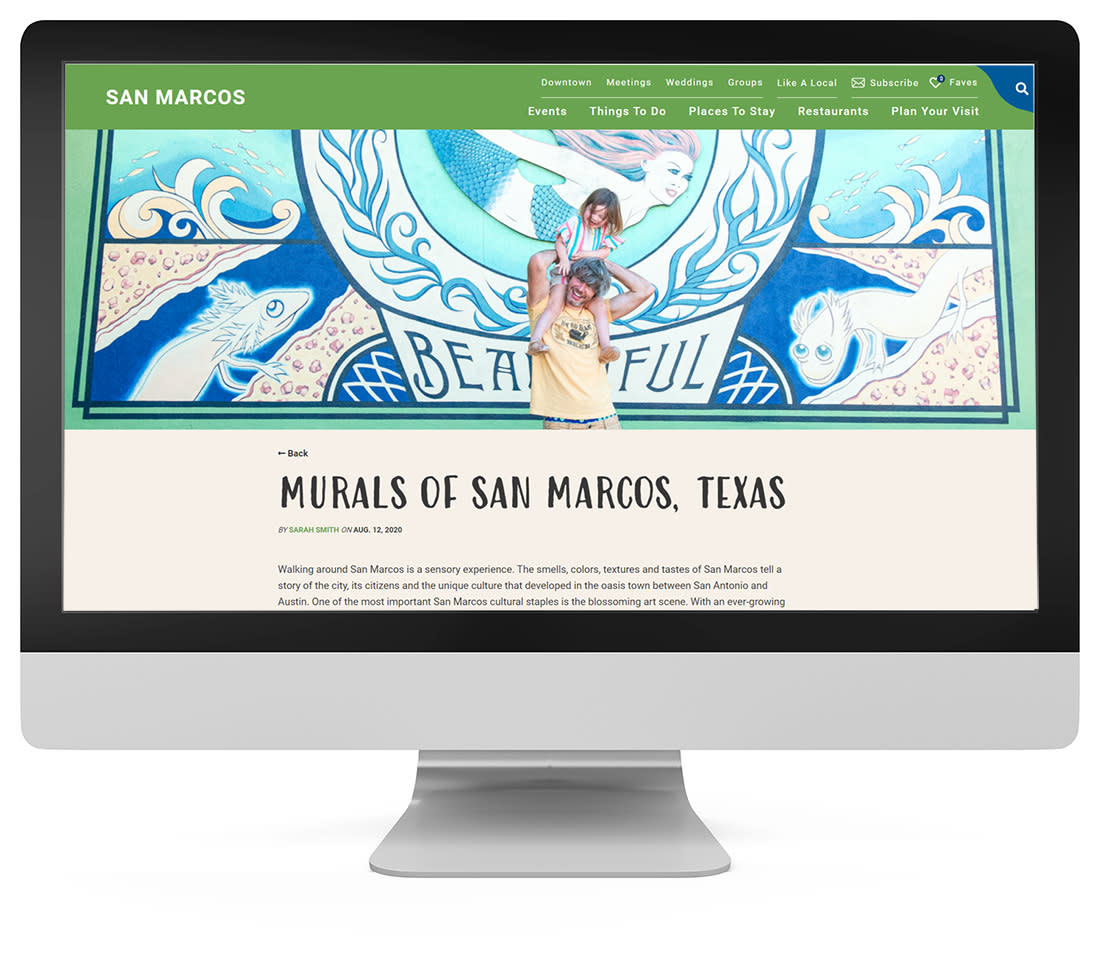
Buffalo Niagara Convention & Visitors Bureau
Buffalo Niagara Convention & Visitors Bureau houses murals of every color. Complete with a video, photos of can’t-miss murals, and information on the city’s three mural walking tours, the Explore Our City of Murals landing page on the DMO’s website will leave any artistic traveler drooling. But really, this landing page is picture-perfect!
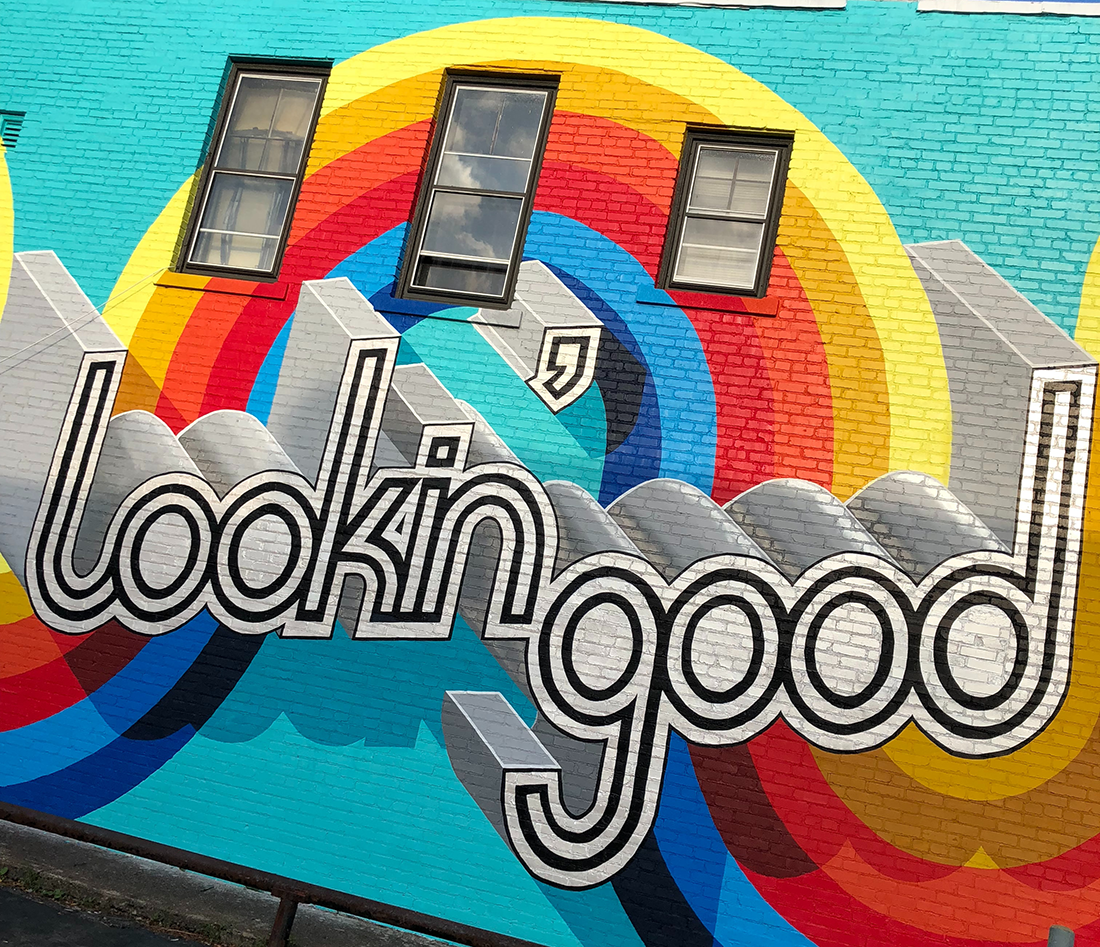
Visit Tucson
Tucson — where murals meet the desert. Even in scorching summer temps, Visit Tucson has no issues promoting its destination’s self-guided mural tours. Known for its rich Mexican, Native American, and Western cultures, Tucson’s local artists reflect the melting pot of the destination in their murals.
Artsy Arizonans can visit the Mainly Murals Walking Tour or Beauty on Bricks on the DMO’s website to get the lay of the land as they plan their mural tours. There are also multiple maps available.

Visit Berlin
Berlin, Germany, might have a historic reputation for a certain infamous wall, but Visit Berlin is adding a splash of color to the destination. Travelers can check out the DMO’s website, where landing pages like Colorful Walls: Murals in Marzahn-Hellersdorf and 11 reasons why we look forward to Berlin Mural Fest help them locate the iconic must-see murals. The many murals have gained the attention of locals, travelers, and media alike — especially those in search of a historic, cultural, and downright beautiful experience in Berlin.
“The Berlin Wall, once a symbol of division, now forms a large open-air gallery featuring 105 murals by artists from across the globe,” said Culture Trip .
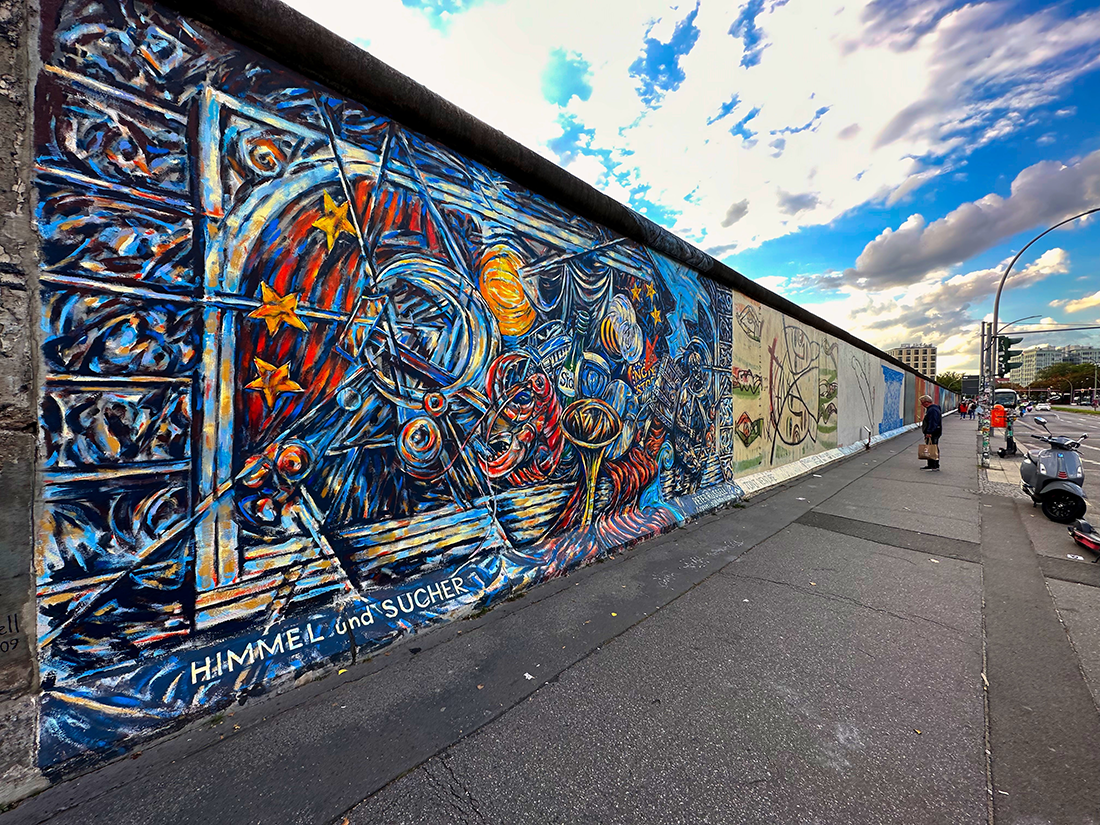
Main photo by Marcus Lenk on Unsplash

Kasey Pooley
With a knack for witty language and eye-catching copy, Kasey fits right into the marketing department as the communication & social media specialist. She researches, writes, and edits engaging content about destination marketing organizations, creating compelling press releases, case studies, articles, and more. She is also Simpleview's social media guru — responsible for content creation, design, and posting on all social media platforms.
- Creative Australia
- Partnerships and co-investing with us
- Creative Workplaces
- Music Australia
- Download our logo
- Protocols For Using First Nations Cultural And Intellectual Property In The Arts
- Australia at the Venice Biennale
- Asia Pacific Arts Awards
- Creative Australia Awards
- First Nations Arts and Culture Awards
- Marketing Summit
- National Arts And Disability Awards
- Prime Minister's Literary Awards
- Speeches and opinion
- Latest research
- Research Partnerships
- Electorate profiles
- Artists and creative careers
- Cultural and creative industries
- Diversity and equity
- First Nations
- International
- Value and impact
- Find a grant or opportunity
- Become an assessor
- Current Assessors
- Assessment panels
- Four Year Investment for Organisations
- Major Festivals Initiative
- Successful applications
- Investment FAQ's
- Awarded grants
Development
- Digital Culture Programs
- Leadership program
- Sector Recovery Initiatives
- First Nations roundtables
- Think Inside the Square
- Creative Connections
Partnerships + Philanthropy
- Creative Partnerships Australia
- Australia Cultural Fund
- Venice supporters
- Donate to Creative Australia
First Nations First
- First Nations-led Board
- Festival of Pacific Arts and Culture 2024
- Purrumpa National Gathering
- Protocols for using First Nations Cultural and Intellectual Property
- First Nations Arts and Culture Strategy
- Media releases
- First Nations Arts Awards
- National Arts and Disability Awards
- Upcoming Events
- Our COVID-19 response
- Strategy and corporate plan
- Procurement
- Payments process
- Our compliance documents
- Our statement of expectations
- Our submissions
- Our policies
- Our annual reports
- Accessibility
Domestic Arts Tourism: Connecting the country
Image credit: Homage to the Castlemaine Woollen Mill workers – Libre Hem, 2017. Credit: Denise Button, The Mill Castlemaine.
Watch the Domestic Arts Tourism: Connecting the Country webinar.
A recording of this webinar is now ready to view.
The relationship between art and travel is long-standing, deep and complex. We travel to see art, and even when art isn’t our primary destination, we naturally gravitate to the art of a place in order to understand the meaning of that place.
Domestic tourism provides an opportunity for Australians to immerse themselves in exceptional cultural experiences, and many Australians are travelling to experience the arts: at concerts, in galleries, on stages, or through more niche opportunities across the country.
Arts experiences have a growing role as a driver for tourism in Australia and are increasingly part of visitors’ itineraries. This report presents trends and insights on how Australians connect with the arts as they travel around the country, whether on short daytrips or longer overnight stays. It helps build the picture of Australians’ willingness to travel for the arts, of the value of the arts in helping us understand the place we are in, and the great capacity of the arts to support local economies and build stronger regional communities.
From large scale festivals and events, to visits to artist workshops and studios, the arts draw domestic tourists to both metropolitan and regional locations, providing opportunities to share local creativity and culture with visitors.
There is a willingness to travel to destinations beyond capital cities to seek new and authentic experiences, including growing engagement with First Nations arts and craft – diverse expressions of the world’s oldest continuing living culture.
Australians are connected through these experiences by building our community wellbeing, cultural identity and social cohesion, while supporting local and regional economies.
As a priority under our five-year strategy Creativity Connects Us , the Australia Council is committed to enabling more opportunities for Australians to be captivated by arts experiences in everyday life. We want inspiring arts experiences to be welcoming and easily accessible, and reflective of our unique culture that is simultaneously ancient and contemporary.
This report is a companion piece to our previous research publication International Arts Tourism: Connecting cultures . Together these reports highlight the value of arts and culture to Australia’s tourism strategies and the importance of a vibrant, creative landscape for tourism, the broader visitor economy and society as a whole. They also equip artists and arts organisations with valuable intelligence about the behaviours and interests of tourists in Australia and strengthen the evidence base for Australian arts and creativity.
Elevating the value and broader relevance of arts and creativity in Australian public life and policy making is critical to a creatively connected nation where creative enterprise is entrenched across society, industry and government as the fuel that ignites our social, cultural and economic success.
Dr Wendy Were, Executive Director Strategic Development and Advocacy.

Media contact:
Brianna Roberts, Media Manager Australia Council for the Arts Phone: (02) 9215 9030 Mobile: 0498 123 541 Email: [email protected]
Key insights:
- Domestic arts tourism is growing: Greater numbers of Australians are travelling than ever before. Along with population growth and overall growth in domestic tourism, the numbers of Australians engaging with the arts while exploring their own country are growing.
- There are unique offerings in different parts of Australia: There is no one-size-fits all for arts engagement on a domestic trip – Australians connect with the arts in a broad range of ways. The most popular and fastest-growing arts tourism activities vary across the country. Each state, territory and region offers unique arts and creative experiences, and this is reflected in the data.
- First Nations arts and craft are a strong and growing area of domestic arts tourism: First Nations arts tourism is increasing, reflecting Australians’ strong and growing interest in engaging with First Nations arts for their beauty, strength and power, and to understand who we are as a nation. The regions where tourists are most likely to engage with First Nations arts and craft are in regional Australia, and particularly regional areas of the Northern Territory where First Nations arts and craft are driving arts engagement by tourists.
- Arts tourism tends to align with travelling further, staying longer and spending more: Arts tourists are high value tourists – they are more likely to stay longer and spend more when travelling than domestic tourists overall. Australians are more likely to engage with the arts when they travel further afield – those who take overnight trips rather than daytrips, and those who travel outside their home state. The areas where tourists are most likely to engage with the arts are often outside the large east coast capital cities.
Destinations around Australia:
Click on each image to learn about different arts destinations for domestic tourists across Australia.

2019 was named Queensland’s year of Outback Tourism
The Queensland region where visitors were most likely to engage with the arts on an overnight stopover was Outback Queensland. Of those who visited Outback Queensland on an overnight stopover, 14% engaged with the arts. 68
The Queensland Government declared 2019 the Year of Outback Tourism, celebrating the outback and encouraging visitors to explore the region. 69
Outback festivals draw tourists to regional and remote areas. The Big Red Bash Festival in Birdsville, on the edge of the Simpson Desert in Outback Queensland, is the world’s most remote music festival. 70 The Big Red Bash also includes an arts and entertainment program for children – in 2019 this was the Big Red Rumble, exclusively for kids at the festival. Kids at the 2019 Big Red Bash worked with musicians and bands to create a performance piece to be rehearsed and performed at the festival. 71
Also in 2019, the Central West region in Queensland was profiled in Australian cultural and creative activity: A population and hotspot analysis, an Australian Research Council Linkage project being undertaken by the Queensland University of Technology and the University of Newcastle, in partnership with five state government cultural funding agencies. The project involves in-depth analysis of twenty areas that have been identified as ‘creative hotspots’ based on local cultural and creative activity. 72
The report identifies that tourism activity has become increasingly a mainstay of a local economy facing big challenges, including the major psychological and economic depressive effects of long-term drought. It highlights a very professional, resilient and sustainable tourism ecosystem which effectively links cultural and creative activity with heritage, science and cultural infrastructure as well as traditional industries such as agriculture.
68 Data is based on a four-year average from 2015 to 2018.
69 Queensland Government 2018, 2019 The Year of Outback Tourism, Media Statement, 16 December 2018, viewed 5 November 2019. https://statements.qld.gov.au/Statement/2018/12/16/2019-the-year-of-outback-tourism
70 Birdsville Big Red Bash 2019, viewed 5 November 2019, https://www.bigredbash.com.au/bigredbash/index
71 Birdsville Big Red Bash 2019, Big Red Rumble, viewed 5 November 2019, https://www.bigredbash.com.au/bigredbash/big-red-rumble
72 Queensland University of Technology 2019, Australian Cultural and Creative Activity: A Population and Hotspot Analysis Central West Queensland: Blackall-Tambo, Longreach and Winton, 1 August 2019. https://research.qut.edu.au/creativehotspots/queensland

The Darwin Aboriginal Art Fair is one of the largest meetings of artists, art buyers and tourists in Australia
In 2018, First Nations art and craft accounted for 11% of the arts activities that visitors engaged with in Darwin on overnight stopovers, greater than any other capital city in Australia. In addition, attendance at festivals on overnight stopovers in the Northern Territory has grown 83% since 2014.
The Darwin Aboriginal Art Fair (DAAF) is a festival that brings together 70 art centres and represents the artwork of over 2,000 First Nations artists from across Australia with an estimated 14,000 visitors in 2018. The fair also contributed an estimated $15 million to the local economy. 64
The DAAF, and the art centres involved, present visitors the opportunity to purchase First Nations art ethically, ensuring all proceeds go directly to artists and art centres.
In 2019 the DAAF showcased the collaboration between designer Gorman and Mangkaja Arts, highlighting the intersections between vibrant contemporary First Nations arts and fashion. 65
65 Ashton, K 2019, Darwin Aboriginal Art Fair draws thousands as artists fight unethical dealers , ABC, 14 August 2019. https://www.abc.net.au/news/2019-08-12/darwinaboriginal-art-fair-sees-biggest-ever-crowds-in-topend/11404456
Darwin Festival 2019, Darwin Aboriginal Art Fair, viewed 5 November 2019. https://www.darwinfestival.org.au/events/darwin-aboriginal-art-fair
66 Nurick, J 2019, Why you should visit the Darwin Aboriginal Art Fair: from Country to Couture show, Vogue Australia, 2 August 2019. https://www.vogue.com.au/culture/why-you-should-visit-the-darwin-aboriginalart-fair-from-country-to-couture-show/news-story/ bade542b215b4fe01c29bb109a22bb24

The annual Byron Writers Festival is attracting literature fans to the region
The Byron Writers Festival contributes to Australia’s vibrant literature sector and attracts visitors from around Australia. Each year, 12,000 people attend the festival across a multitude of events, and membership numbers continue to increase.
Nearly half of those who attended the Byron Writers Festival in 2018 were from outside the local region (48%), with most visitors travelling from elsewhere in NSW, South East Queensland and Victoria.
Attendees who travelled to the Byron region for the festival were also more likely to be newcomers to the festival, reflecting an increase in Australians’ willingness to travel for the arts. 52
52 Byron Writers Festival 2018, 2018 Annual Report , 2018, Byron Bay. https://byronwritersfestival.com/wp-content/uploads/2019/03/Byron-WF-2018-AGM-report.pdf

Artists in regional areas are opening their studios to visitors
Open artist studios offer a unique experience: a rare opportunity for visitors to meet artists, see their private studios and view works in progress. Visitors can engage with the depth of the artist’s work, seeing it through a more personal lens than on a gallery visit.
Making Art Work, a 2017 study of professional artists working in Australia, found that one in six Australian artists live in regional cities or towns, and craft practitioners are some of the most likely to live outside capital cities. 15
Margaret River Region Open Studios, a free and annual open art event celebrates the diverse and vibrant visual art in the Margaret River Region in Australia’s South West. Over 100 artists in the Margaret River region open their studios to visitors, showcasing art forms from craft and visual art to printmaking and installation. 16
15 Australia Council for the Arts 2017, The Arts in Regional Australia: A Research Summary, November 2017, Sydney. https://www.creative.gov.au/research/regional-arts-summary Throsby, D & Petetskaya, K 2017 Making Art Work: An Economic Study of Professional Artists in Australia, available at https://www.creative.gov.au/research/making-art-work
16 Margaret River Region Open Studios 2019, viewed 5 November 2019. https://www.mrropenstudios.com.au Australia’s South West 2019, viewed 5 November 2019. https://www.australiassouthwest.com/event/margaret-river-region-open-studios-0

Burnie’s Makers’ Workshop is a space for people to make and experience art
Makers’ Workshop is a cultural hub in Tasmania’s North West celebrating local makers, innovators and artists, operated by the University of Tasmania.
Opened in 2009, Makers’ Workshop offers a range of visitor experiences including interactive paper-making tours, encounters with artists, historic displays and an exhibition space.
The Workshop is well-known for its vibrant Makers’ Program, a consortium of (over) 30 local artisans specialising in a variety of craft and art forms. Makers’ demonstrate their skills and techniques to visitors, showcasing and selling a (superb) broad range of quality handmade products and artworks at the on-site studios.
Makers’ Workshop has become increasingly important for the local region as a cultural attractor for more than 135,000 visitors annually, (but) and also as a learning space for people to make and experience art in a place-based setting.

Repurposed spaces can become regional cultural hubs
A former woollen mill in the Bendigo Loddon tourism region, The Mill Castlemaine, attracts visitors to the region with food, artisan markets and artists workshops.
The Mill’s artisan precinct is a space for tenants and stallholders to share their craft and artists to showcase their spaces and studios, as well as offering arts and craft workshops to engage visitors.
Also in Castlemaine, Lot19 Art Space is home to 21 artist studio spaces as well as a contemporary art gallery and outdoor sculpture park. Studios include Castlemaine Press, a community access print-making studio; and Castlemaine Clay a community access ceramics studio.37
Community involvement in artist spaces fosters community social cohesion and the opportunity to engage visitors to Castlemaine. Artists can share their craft, and the public can share and contribute to their own understanding of art, creativity and the region.
37 Lot19 Art Space, viewed 2 February 2020, https://www.lot19art.com

Adelaide has a high proportion of arts daytrips that include craft workshops
There can be blurred boundaries between the arts activities in the National Visitor Survey (NVS) and while respondents select the category that best fits the activity undertaken, they may choose more than one category for the same activity. For example, a workshop that is part of a festival may be reported as festival attendance or workshop attendance or both.
Workshops are often a featured part of a festival’s program. The South Australian Living Artists Festival (SALA) is a state-wide festival of visual art held yearly in locations across South Australia – not just Adelaide – to promote and celebrate South Australian visual artists. 17
The festival includes open artist studios and workshops, where visitors are encouraged to participate, not just observe. SALA includes an Open Studio Weekend, with additional opening times over the festival, where visitors can meet local artists and visit their work spaces. The festival includes tours and workshops, where visitors are encouraged to participate, not just observe.
17 South Australian Living Artists (SALA) Festival 2019, viewed 5 November 2019. https://www.salafestival.com

Canberra Glassworks gives visitors the opportunity to watch artists at work
Watching artists at work is an immersive and unique experience. Visitors to Canberra Glassworks have the opportunity to watch glass artists at work and learn about the processes of glass blowing, neon, kiln forming and casting.
As well as the ability to view glass artists working, Canberra Glassworks presented eight exhibitions and welcomed 84,000 visitors through its doors in 2019. 67
67 Source: Canberra Glassworks

Co-commissioned works by major festivals increase audience reach
Counting and Cracking, co-commissioned by the Sydney Festival and Adelaide Festival, exemplifies the power of art to reach new audiences and create a genuinely inclusive cultural landscape.
A co-production by Belvoir St Theatre and Co-Curious, Counting and Cracking is a large-scale theatrical work telling a Sri Lankan-Australian story which has connected communities and continents and made a profound contribution to our unfolding national story.
A resounding success at both the Sydney and Adelaide Festivals, Counting and Cracking sold out its world premiere season at the 2019 Sydney Festival, followed by standing ovations at the Adelaide Festival. 18
The work speaks to an exciting new audience and the power of genuine community engagement. It attracted more than the traditional or ‘typical’ festival goers, including having a deep and profound impact on the local Sri Lankan community who saw for the first time their families’ stories and histories placed where they belong, as part of Australia’s story.
18 Australia Council for the Arts 2019, Annual Report 2018-19 , October 2019, Sydney. https://www.creative.gov.au/about/annual-report-2018-19
Definitions:
Domestic arts tourist definition
In this research, a domestic arts tourist is defined as a resident of Australia who did at least one of the following while on a daytrip or overnight trip within Australia:
- attended theatre, concerts or other performing arts
- visited museums or art galleries
- visited art or craft workshops or studios
- attended festivals, fairs or cultural events
- experienced First Nations art, craft and cultural displays
Australians travel in different ways, depending on their destination, time available and preferences. This report includes analysis of daytrips and overnight trips.
Daytrip definition
Tourism Research Australia defines daytrip visitors as Australian residents who travelled at least 50 kilometres away from home (round trip) and were away from home for at least four hours but do not spend a night away from home as part of their travel.
Australians travelling on daytrips are likely to go to destinations closer to their home, given the limited time daytrips afford.
Overnight trip definition
Overnight trips are taken by Australians wanting to stay longer at their destination, or who may be visiting a destination that is further away from their home. Tourism Research Australia defines an overnight trip as a trip where Australian residents stayed one or more nights at least 40km from home while travelling within Australia.
Tourism Research Australia’s tourism regions
Tourism Research Australia divides Australia into 77 tourism regions based on the Australian Bureau of Statistics (ABS) geography standard. Throughout this report selected tourism regions are highlighted by data and case studies.
Time periods for analysis
To ensure sufficient sample sizes for analysis, this report looks at two time periods. At the overall, state and territory, capital city tourism regions and metropolitan and regional levels, analysis is based on data for the 2018 calendar year. All other tourism region data is reported as four-year average data from 2015–2018 unless specified.
Australians are more likely to engage with the arts when they travel further afield – those who take overnight trips rather than daytrips, and those who travel outside their home state. The areas where tourists are most likely to engage with the arts are often outside the large east coast capital cities.
Tourism regions with the highest proportion of arts activity for daytrips, 2015–2018
1 Ballarat (Vic)
2 Canberra (ACT)
3 Bendigo Loddon (Vic)
4 North West (Tas)
5 Capital Country (NSW)
6 Sydney (NSW)
7 Adelaide Hills (SA)
8 Melbourne (Vic)
9 Hobart and the South (Tas)
10 Southern Queensland Country (Qld)
Tourism regions with the highest proportion of arts activity on overnight stopovers, 2015–2018
2 Hobart and the South (Tas)
3 Canberra (ACT)
4 Alice Springs (NT)
5 Darwin (NT)
6 Spa Country (Vic)
7 Litchfield Kakadu Arnhem (NT)
8 Outback NSW
9 Melbourne (Vic)
10 Bendigo Loddon (Vic)
In the news
– Arts is a key driver of regional tourism (ABC NewsRadio), 19 February, 2020
– Arts Tourism and the Power of Connecting Communities (2ser 107.3). 19 February 2020
– Arts tourism could be major factor in rebuilding communities devastated by bushfires (ABC Online). 17 February 2020 – 6am
– Arts tourism key to reviving communities (The Courier). 17 February 2020 – 12:01pm
– ‘You’re soaking in it’: Arts hidden driver of tourism (Sydney Morning Herald). 16 February 2020 – 5:21pm
Related content

International Arts Tourism: Connecting cultures

First Nations arts engage international tourists

Private: Corporate Plan 2019-2023

Connecting Australians: Results of the National Arts Participation Survey, June 2017


Electorate Profiles
Acknowledgement of country.
We acknowledge the many Traditional Custodians of Country throughout Australia and honour their Elders past and present.
We respect their deep enduring connection to their lands, waterways and surrounding clan groups since time immemorial. We cherish the richness of First Nations Peoples’ artistic and cultural expressions.
We are privileged to gather on this Country and through this website to share knowledge, culture and art now, and with future generations.
First Nations Peoples should be aware that this website may contain images or names of people who have died.
- Media release
- Become an Assessor
- National Performing Arts Partnership Framework (Partnership Framework)
- Visual Arts and Craft Strategy (VACS)
- International Engagement Strategy 2021-25
- International Engagement Fund
- Australia at the Venice BIennale
- Leadership Programs
- Re-imagine: What Next?
- Protocols and resources
- Online resources
- Australian Cultural Fund
- Venice Supporters
- Arts and disability
- Cultural Engagement Framework
- Research partnerships
- Venice Biennale 2024
- Opportunities
- First Nations Round Tables
- Protocols for using First Nations Cultural and Intellectual Property in the arts
- Media Releases
- Meet our CEO
- Statement of intent
- Payments process for suppliers and grant recipients
- Modern Slavery Statements
- Partner with us
- Español
- Français
Choice of language
- Read in English
- Leer en español
- Lire en français
- Leggere in italiano
What is Art Tourism? A form of sustainable travel
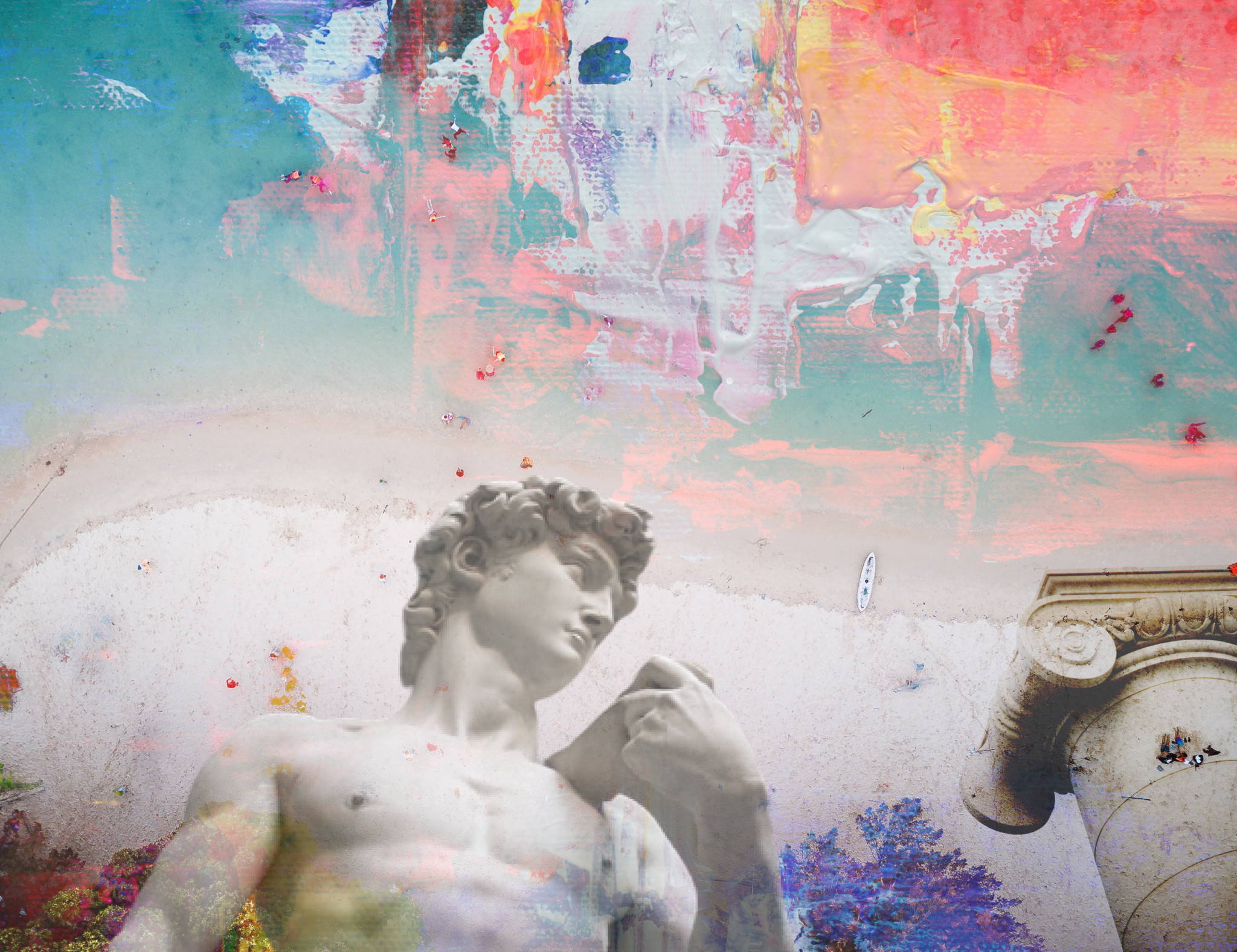
Art tourism is a form of travel that revolves around engaging with artistic and cultural activities, in touristic or historical settings. Sometimes referred to as creative tourism, It involves visiting destinations that also feature art display. It offers a unique travel experience and contributes to the conservation and reappropriation of cultural spaces that might have otherwise been lost.
Breathing Fresh Air into History
For visitors, Art Tourism translates in exploring historical sites, museums, galleries , towns or exhibits with a fresh perspective . It can also look like participating in creative workshops or seeing artists perform on location. But why does it matter?
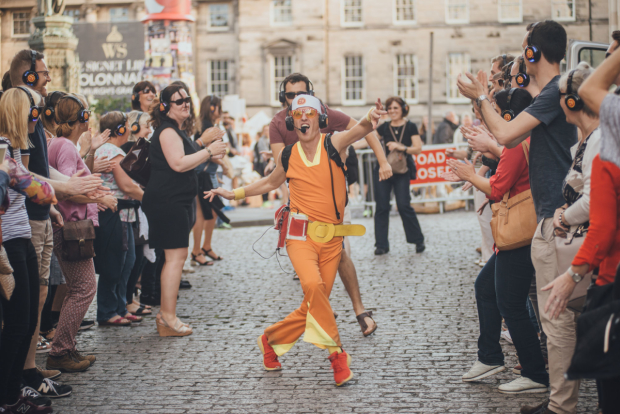
Artistic initiatives and interventions create new interest in historical destinations that might have otherwise been overlooked, forgotten or underfunded.
The practice promotes the conservation of historical destinations and cultural spaces that might have fallen into disrepair or neglect. By attracting tourists with art, these places receive much-needed attention and investment for their preservation. It allows communities to fund the restoration of historical buildings and even revitalise neighbourhoods . They prevent the loss of invaluable cultural heritage.
Many small towns and villages in Europe, for example, have witnessed significant economic development through artistic tourism . By leveraging their cultural assets and heritage, these destinations attract tourists, create jobs and foster a vibrant local economy.
Associations, donors and international organizations play a crucial role in supporting these sort of endeavors, often working on a non-profit basis to ensure the sustainability of the projects and their positive impact on the local community.
(La la la la) Art tourism is all around the world
Due to its success in rekindling local economies, artistic tourism has recently multiplied throughout Europe and the rest of the globe. Initiatives related to the practice can manifest in the most disparate regions , each with its unique artistic heritage waiting to be explored.
One positive example is PROYECTO ARMAZÓN , a project led by Margarita Asuar in Spain. This initiative revitalizes old castles by transforming them into exhibition spaces featuring art related to the 17 OECD sustainability goals .
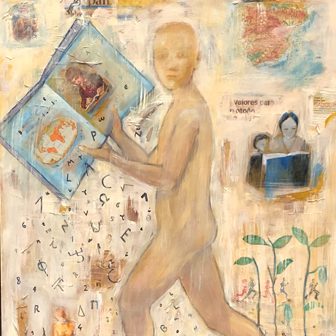
The selected works include paintings, photographs, sculptures and more. Such projects not only attract visitors but also create a platform for promoting social and environmental awareness, all while preserving historical structures.
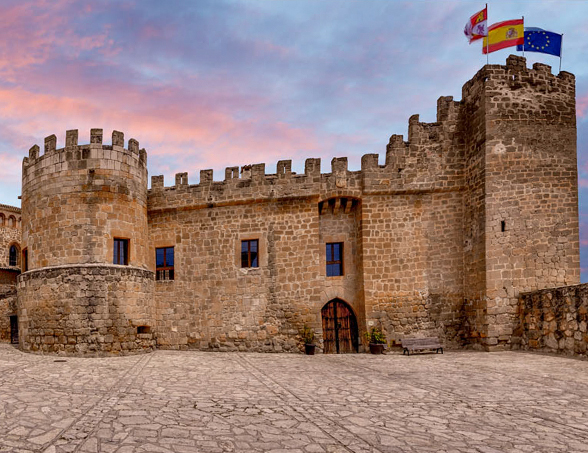
A word of caution
Not all art tourism initiatives share the same non-profit and community-focused goals. While some attractions may present themselves as such, they may primarily serve commercial and sales objectives. Instead of helping local populations, preserving the environment or even supporting local economies, they might even hinder them. This addresses ventures such as the Abu Dhabi Louvre .
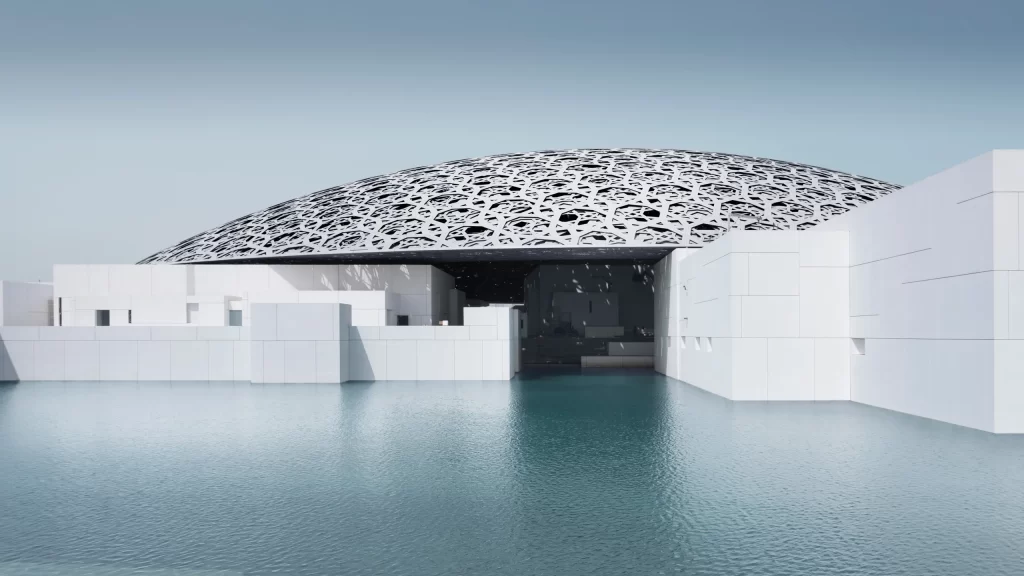
Differentiating between projects that genuinely support local communities and those driven purely by commercial interests is crucial in understanding the true nature of art tourism. It is essential to critically evaluate such initiatives to ensure they align with the principles of non-profit, community development and cultural preservation, allowing art tourism to truly make a positive impact on the places it seeks to showcase and support.
Sustainability. Last but not least.
By promoting the conservation and reappropriation of cultural spaces, this creative form of tourism fosters sustainable economic development in rural areas. It leads to enrichment for both travellers and local communities.
Art tourism offers a unique, sustainable and rewarding travel experience that combines cultural exploration, creativity and the preservation of historical heritage.
Written by Malu Benjamin July 12, 2023
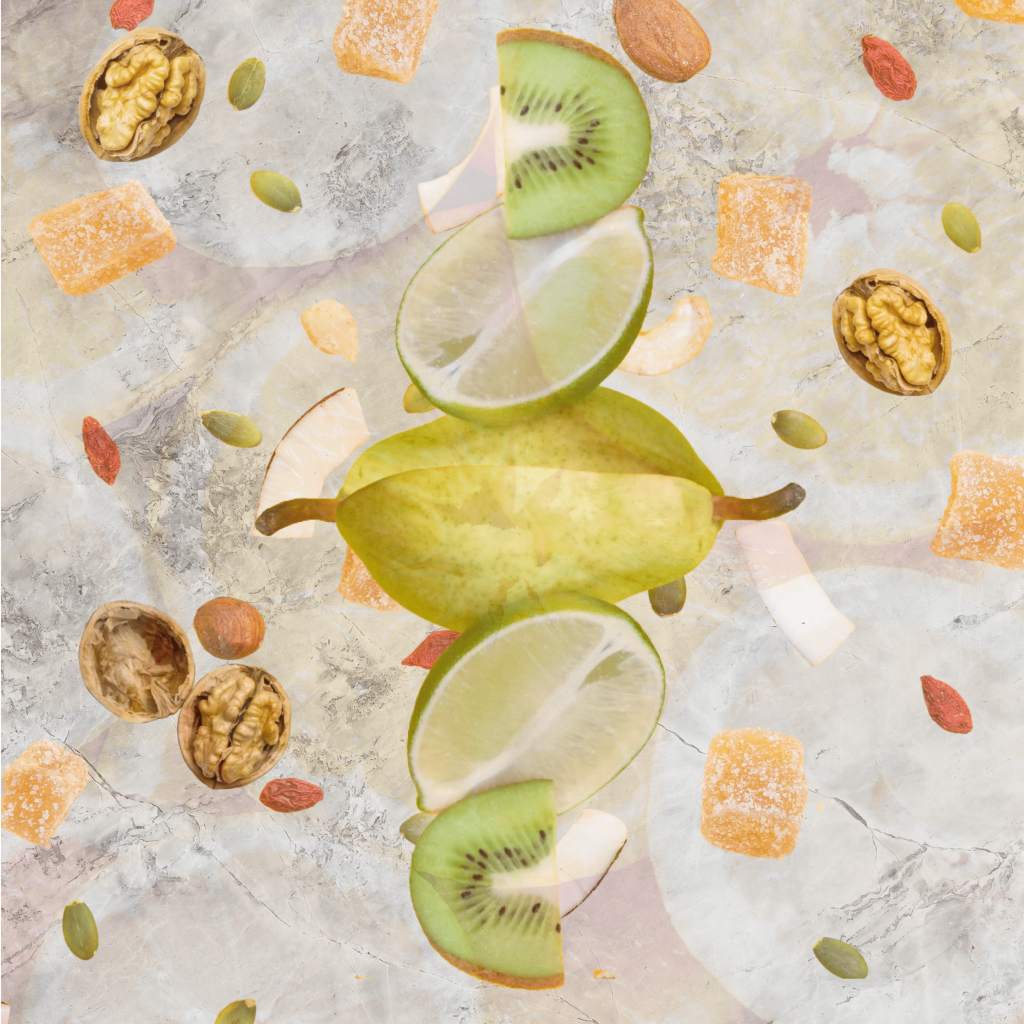
Exploring Vegetarian Delights in Paris
Paris, renowned for its culinary prowess, has embraced vegetarianism with open arms. From flavorful Afro-Caribbean influences to innovative vegan fast-food chains and cozy cafes offering...
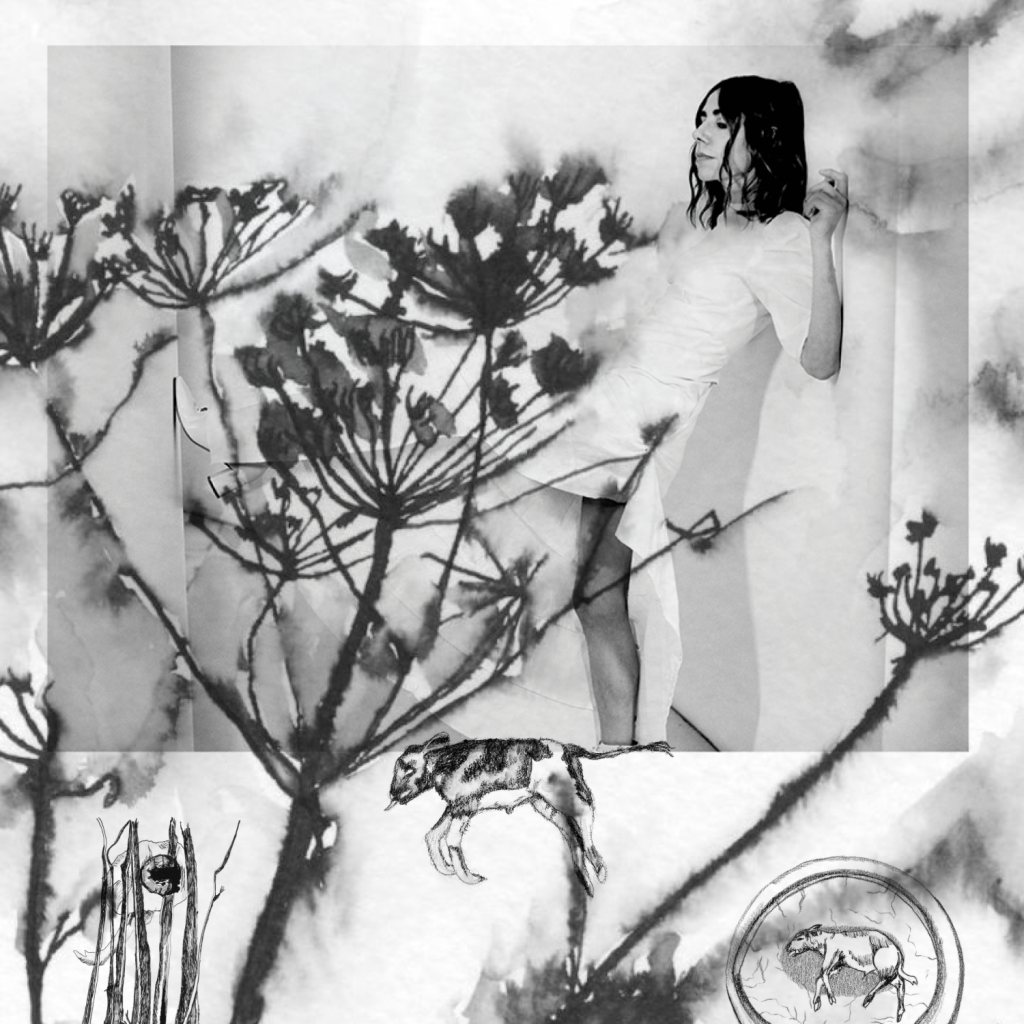
I Inside the Old Year Dying: The Tour in Paris
My heart raced at a dizzying tempo, and beads of sweat trickled down my spine. This was the moment I had yearned for my entire...
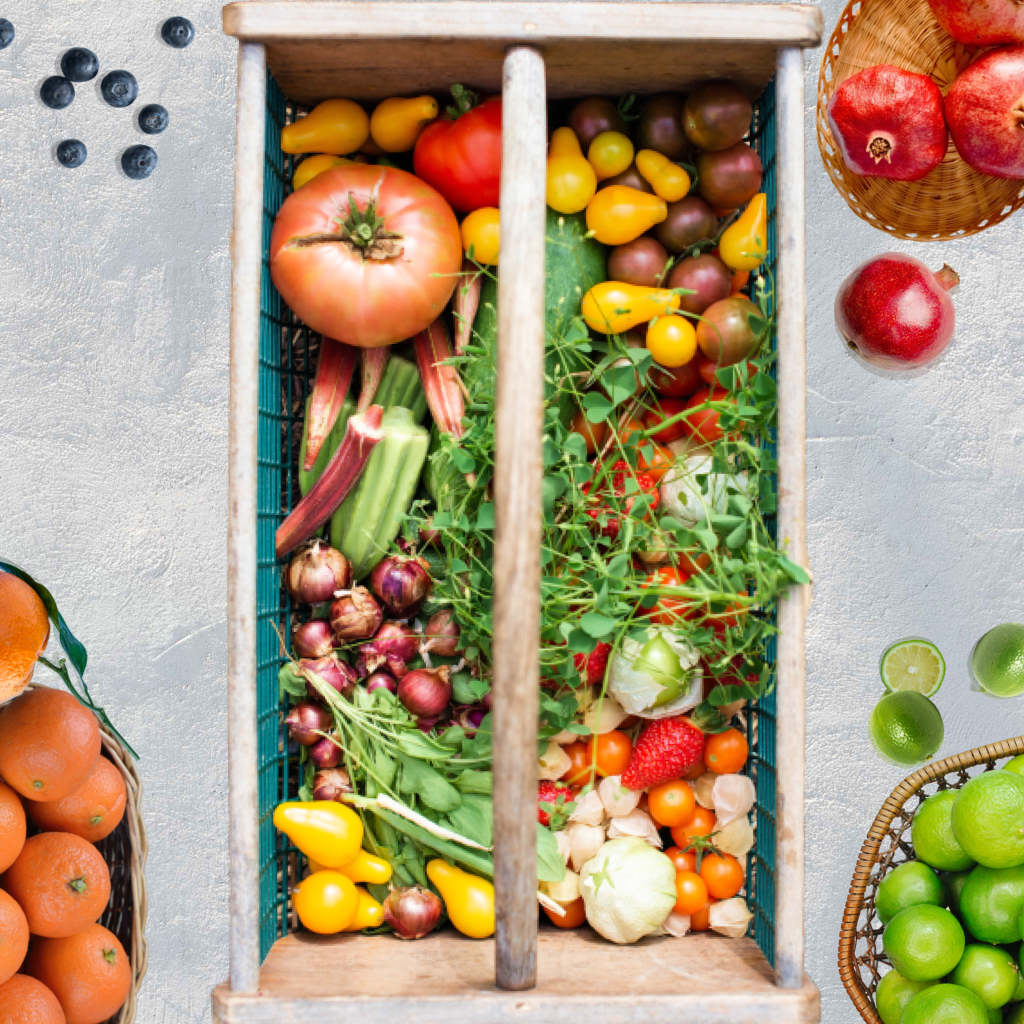
Miyam: Reinventing Responsible Supermarkets
Miyam is not just an ordinary supermarket; it is a responsible establishment that aims to transform the way we shop for groceries. With a strong…

- Download Issue 41 (US Letter, 9 mb)
- Buy as Book on Demand

by Franziska Herren
National tourist routes project in norway: architecture and artworks for resting, recollecting, and reflecting.
We associate Norway with beautiful scenery: high waterfalls, spectacular fjords, and glaciers. Tourists travelling through this huge country can choose between many impressive locations. In 1994, the Norwegian Roads Administration started a project to increase the attractiveness of eighteen scenic routes from Jæren in the south to Varanger in the far north. Mostly small but noteworthy architectural objects and artworks were to be developed along these roads in order to boost rural economies and rural settlement by providing tourist attractions. Such attractions would raise interest both at home and abroad. [1] Examples of projects already realised are the elegantly shaped viewing platform in Stegastein in south Norway, thirty metres above pine trees and 650 metres above Aurlandsfjord. It was designed by Todd Saunders and Tommie Wilhelmsen and gives the visitor the impression of floating in the air. Another example is the waiting room on the ferry quay in the village of Jektvik designed by the architect Carl-Viggo Hølmebakk. It is made of translucent fibreglass which lights up like a Chinese lantern in the long nights of winter. By the end of the National Tourist Routes project in 2024, around 190 installations should have been realised.
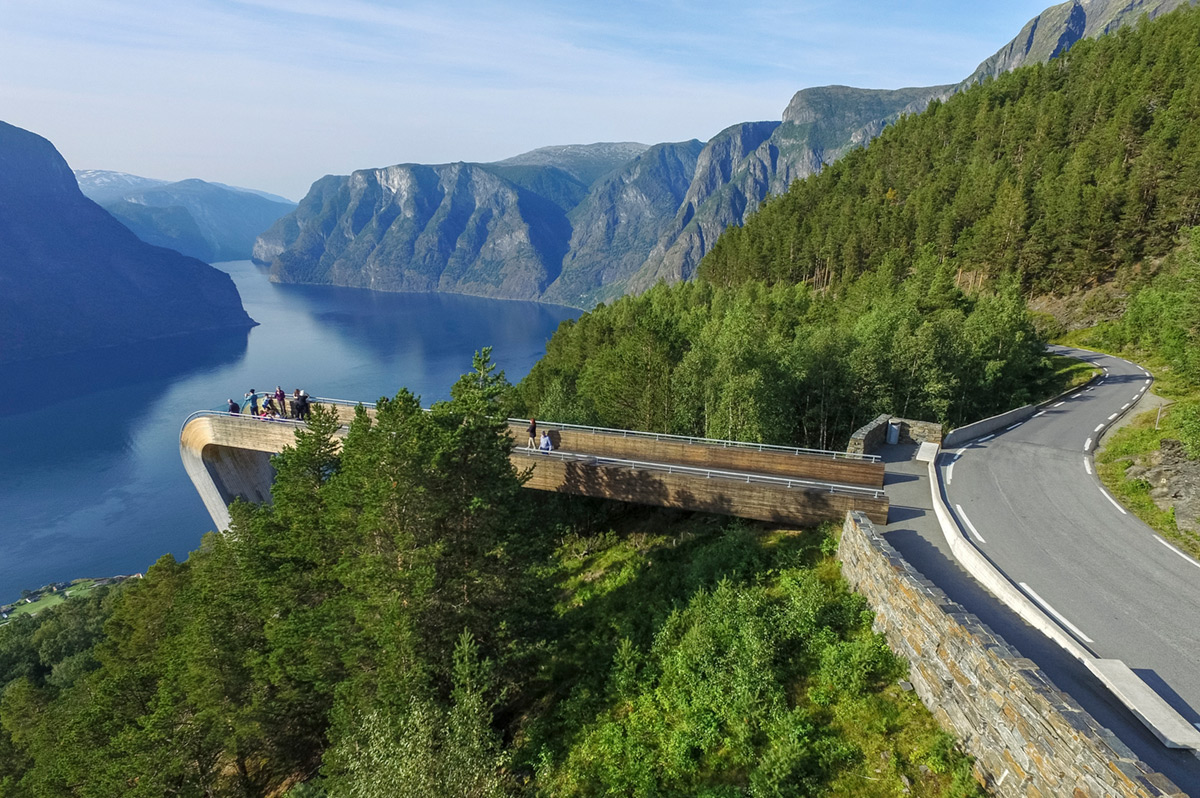
The elegant viewing platform designed by Todd Saunders and Tommie Wilhelmsen at Stegastein is 30 meters over the pine trees and 650 meters above the Aurlandsfjord. For visitors it provides an unique view of the fjord landscape. © Photo: Kjetil Rolseth
The eighteen routes are not connected. The idea behind the project was not to send tourists on a predefined round trip but to invite them to make detours and discover spots they would otherwise have ignored. The artworks and architectural objects were and are developed by young and unknown as well as established Norwegian architects, landscape architects, artists, and designers. One exception is the Steilneset Memorial in Vardø—a small city off the Norwegian mainland in the Barents Sea north of the Arctic Circle: in 2006, the famous Swiss architect Peter Zumthor and the influential French-American contemporary artist Louise Bourgeois were asked to design a memorial to commemorate the ninety-one suspects who were burnt at the stake in Vardø in Finnmark in the 17 th century. What we know about those witchcraft trials derives mainly from court records from local courts. [2]
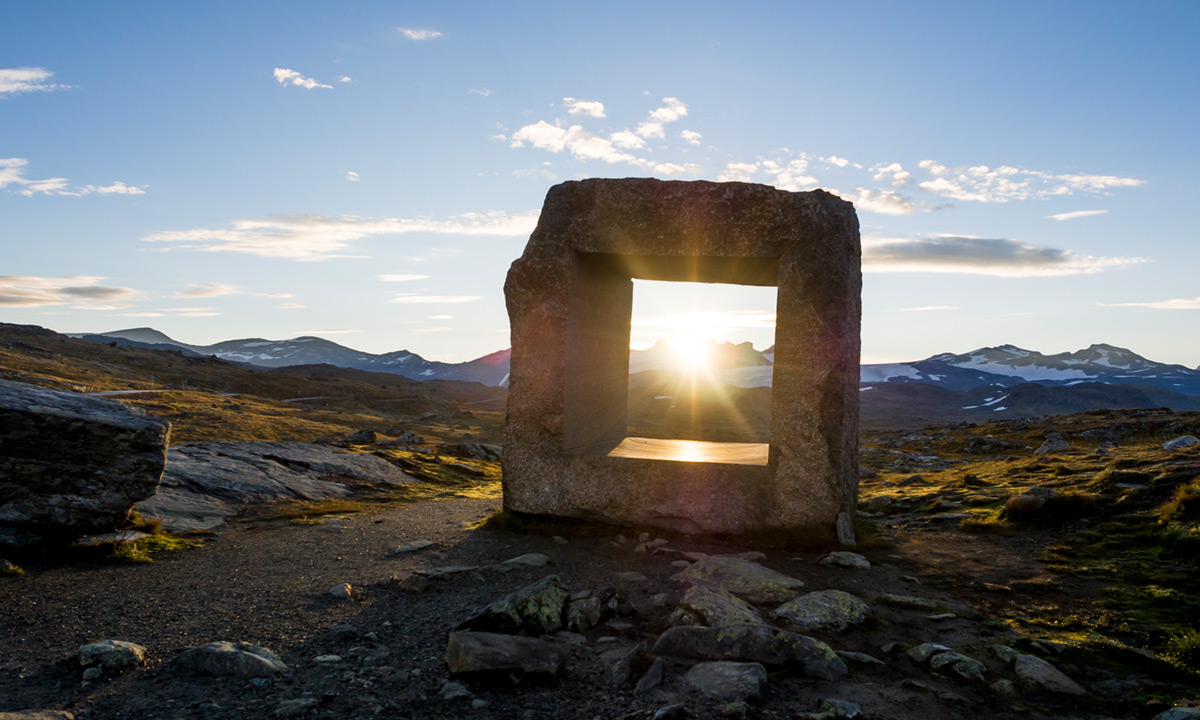
Knut Wold’s stone sculpture is located in the midst of the high-altitude scenery close to the rest area at Mefjellet. © Photo: Werner Harstad / Statens vegvesen
The witchcraft trials in Finnmark are a dark chapter in Norwegian history. Among a total population of approximately 3,000 inhabitants in Finnmark at the time, the percentage of people accused of witchcraft was very high. [3] The authorities believed that storms, shipwrecks, and diseases could be attributed to contact with the devil. [4]
The Steilneset Memorial, completed in 2011, combines art and architecture. It is in two parts: a tall frame made of pine, which contains a fiberglass textile cocoon that houses a 120-metre-long corridor with the exhibition of the trials. The building and the materials the architect used relate to Norwegian tradition: the elongated hall refers to racks for drying codfish. [5]
The corridor is accessed via a ramp, taking visitors up into the core of the pavilion. In the somber space, the visitors find themselves in a sacred atmosphere. Just the slight sound of the sea and the wind passes through the walls.
Ninety-one small windows and ninety-one light bulbs represent each of the victims. Plaques hanging on the walls tell the story of the people who were killed on suspicion of sorcery. Visitors pass slowly and in silence from plaque to plaque. The tragic stories trigger consternation.
The exhibition texts were written by the historian Liv Helene Willumsen, who has been doing research on the Finnmark witch-hunts since the early 1980s. Louise Bourgeois’ installation, The Damned, the Possessed and the Beloved , is placed in a cubic pavilion with seventeen panes of dark glass. An everlasting flame burns upon a chair, and a circle of seven mirrors surrounds and reflects the flame.
The artist and curator Knut Wold was involved in the project from its very beginnings. He works as an artist, art advisor, and member of the architecture council.
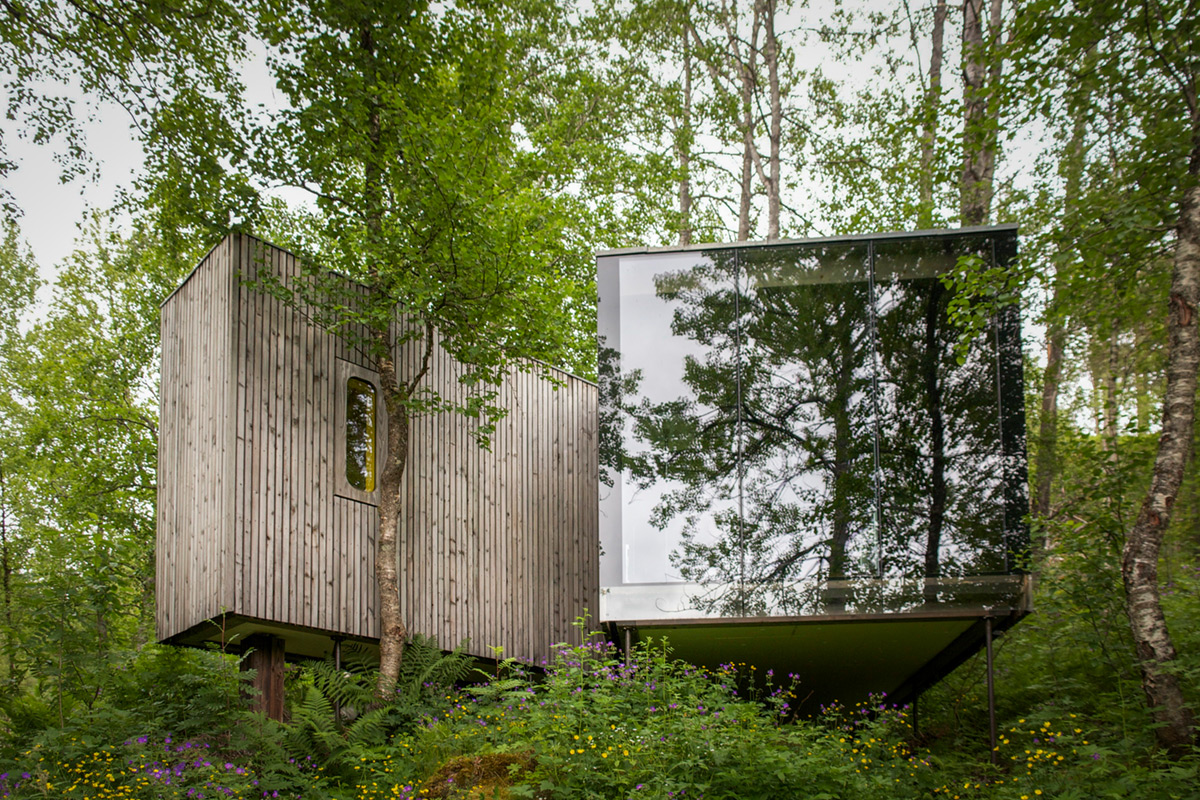
The Juvet Landscape Hotel along the tourist attraction Geiranger-Trollstigen is built as nine small, separately situated rooms, each of them unique and adapted to the landscape. © Photo: Per Ritzler / Statens vegvesen
Franziska Herren: Mr. Wold, why was a project to enhance the National Roads with art and architecture initiated in the first place?
Knut Wold: Norway is a tourist’s country—like Switzerland. When it turned out that tourism was decreasing, the Norwegian Government tasked the Public Road Administration with rethinking the national tourism attractions. In 1994, we started with a four-year pilot project. We experimented with two inland roads—Gamle Strynefjell and Sognefjell—and two coastal routes—Hardangerstrasse and Helgeland. In 2000, we expanded the project and chose eighteen outstanding scenic roads, which we planned to enhance with art and architectural works.
FH: How did you select the eighteen routes?
KW: We invited communities and travel agencies across the whole country to propose a route in their region. We got fifty-two suggested stretches, and then spent two years travelling those fifty-two routes. From those, we selected eighteen, among which the coast, the fjords, and the mountains and waterfalls were represented.
FH: How does the commission choose the places to be enhanced with artworks and architectural objects?
KW: We choose spots of outstanding scenic beauty. Most of them are already observation platforms, rest areas, service facilities, and stopping points. But these places are not up to date regarding size, safety, or facilities. With newly designed architectural objects, we can improve those ageing locations. We also create new rest areas in surroundings with unique views. Sometimes we link hiking trails or footpaths to the sea.
FH: How did the selection process work? Did the commission choose the designers, artists, and architects or did you call for entries?
KW: We called for entries. We received 220 entries, from which we chose seventeen agencies with whom we now collaborate. We only asked the artists and architects ourselves for some projects, like the Steilneset Memorial.
FH: What requirements did a project have to fulfil in order to be chosen?
KW: We demand high quality, being unique, and an outstanding aesthetic statement. The projects should address the situation and atmosphere of their location. At one location, it is suitable if the architectural structure fits harmonically into the scenery like the Juvet Landscape Hotel designed by Jensen & Skodvin. The hotel is located in the northwest of Norway. It consists of nine wooden cube-shaped cottages with big windows. Each of these overlooks the most interesting spot. At other locations, it’s more interesting to create a contrast, like for instance at the little viewpoint Askevågen on the Atlantic Ocean. The architects 3RW-Jakob Røsvik designed a viewing point of stone with glass walls—materials which contrast the surroundings.
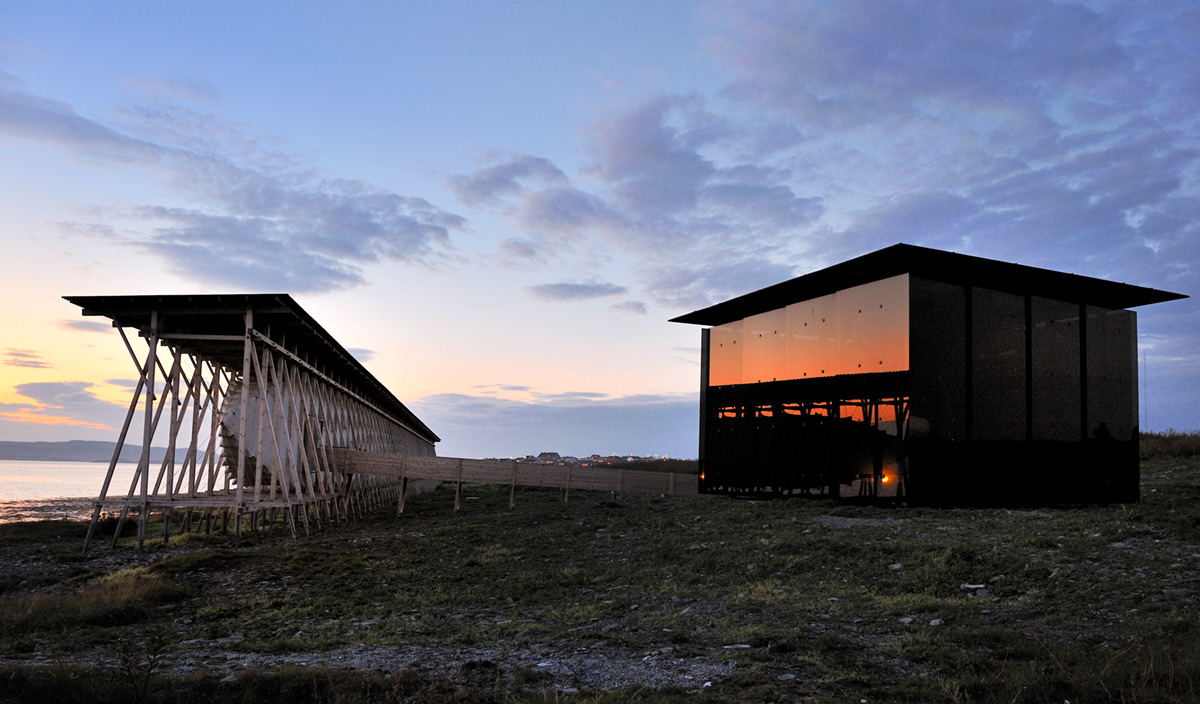
The Steilneset Memorial in Vardø comprises two structures: a long wooden gangway which shows the stories of the 91people who were convicted of sorcery, and a smoky reflective glass structure housing the installation of Louise Bourgeoise «The Damned, The Possessed and The Beloved». © Photo: Jarle Wæhler / Statens vegvesen.
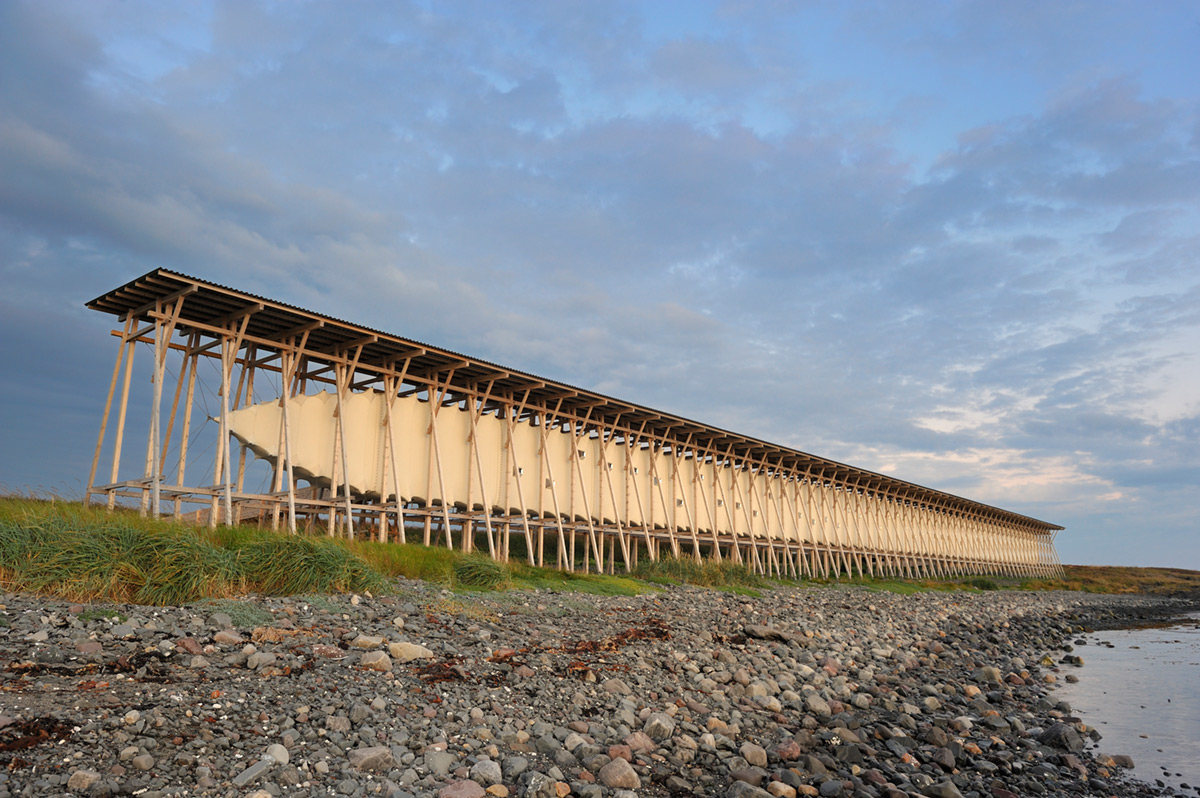
The elongated wooden construction designed by Peter Zumthor refers to a Norwegian tradition: the racks for drying codfish.© Photo: Jarle Wæhler / Statens vegvesen

The installation of Louise Bourgeoise consists of a circle of mirrors within surround and reflect a flaming steel chair. It commemorates the 91 people who were burned at the stake in the seventeenth century. © Photo: Jarle Wæhler / Statens vegvesen
FH: What should a curator consider if curating artworks at a remote location?
KW: The curator should reflect on whether an artwork is suitable for a certain landscape. Personally, I find it much easier to deploy a sculpture in a city. That has to do with proportions: in nature, it is much more challenging to appraise the impact of an artwork on the surroundings. A sculpture that looks huge in a city may look lost in a vast rural area. Besides, nature itself is sometimes pretty impressive. A scant plateau, waterfalls, and sleep cliffs are spectacular by themselves, and it is not meaningful to add an artwork.
FH: You realised a stone sculpture near the rest area Mefjellet on a mountain plateau. It weighs forty-two tons, is in the shape of a frame, and has become a popular photographic subject for tourists. What were your considerations when developing this sculpture?
KW: I realised the sculpture in 1995 during the pilot phase of the whole project. For visitors, the stone works as a frame they can stand inside. Some couples have already been married in it. But my initial idea was different: many stones travel from the glacier to the pass. I was interested in bringing a different kind of stone into these surroundings. The stone for this sculpture comes from a quarry in south Norway. The locals criticised the fact that the stone didn’t originate from this area. I found it interesting. For me, it is crucial to reflect on whether it is right to put an artwork in an untouched landscape or if it is better to interfere as little as possible. Today, I would argue to do less in an area where the nature is strong.
FH: Many projects were developed by young and unknown as well as established Norwegian architects, landscape architects, artists, and designers. Why did the commission choose a world-famous artist and a well-known architect for Vardø?
KW: In the 17 th century, a particularly high number of people were convicted as being witches and burnt at the stake, most of them women. The city of Vardø asked the commission to have an artist design a memorial for the victims. We were very anxious not to make a mistake with this extremely sensitive task, so we looked for an artist who is familiar with this kind of topic. Louise Bourgeois, whom I had visited in New York a couple of times, soon came to my mind. Throughout her whole life, she focussed on the themes of vulnerability and trauma. I imagined that—if she agreed—she would need an architectural structure housing her installation. I considered Peter Zumthor the right person for this task. I have worked with him already on another project within the National Tourist Routes: in Allmannajuvet, he designed four buildings along the old path of the zinc mines. I asked Peter Zumthor first. Then I wrote a letter to Louise Bourgeois in which I enclosed the court records with the protocols of the convictions. She agreed shortly afterwards.
FH: How did the collaboration between Peter Zumthor, Louise Bourgeois, and you work out?
KW: I coordinated correspondence between Peter Zumthor and Louise Bourgeois. As Louise Bourgeois did not use email, I was in contact with Wendy Williams, her managing director, and her assistant Jerry Gorovoy. It took almost a year until it became clear exactly what each of them wanted to do. In the end, we all met in New York at Louise Bourgeois’ home. During the project, the curator Svein Rønning kept in touch with Wendy Williams and Jerry Gorovoy, and I was in close contact with Peter Zumthor.
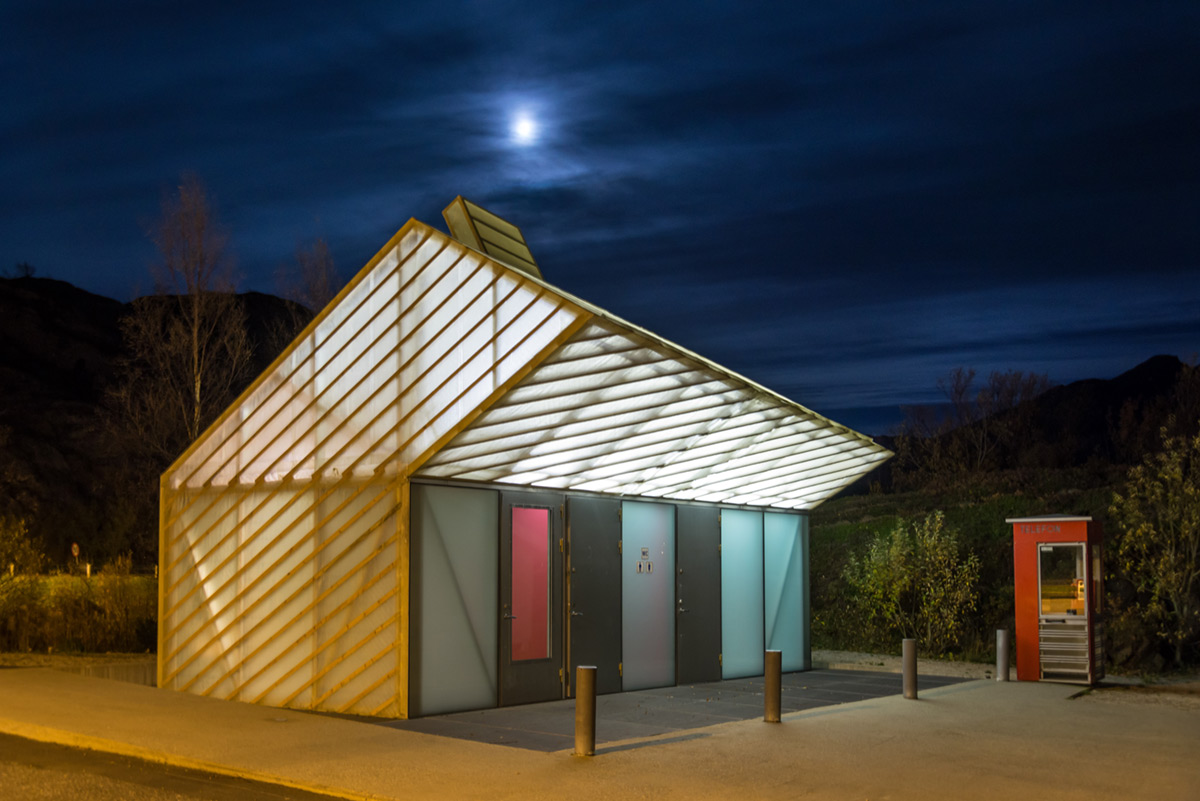
The waiting room in the village of Jektvik is designed by Carl-Viggo Hølmebakk. It is made of translucent fibreglass and it lights up in the darkness like a large Chinese lantern. © Photo: Steinar Skaar / Statens vegvesen
FH: What was the most challenging task in this ten-million-euro project?
KW: The Memorial Hall. It was created from textile stretched with steel wire within a wooden frame. The fabric and the wooden construction have to withstand the extreme weather in this region—heavy storms in autumn and winter. So, there was a long phase of checking. The installation by Louise Bourgeois, however, was easy to incorporate. The artist produced a model. The artwork itself was fabricated in the US and then sent to Norway.
FH: Peter Zumthor describes Vardø as a “once attractive fishing village where today only a few boats are left in the inner harbour and the long wooden racks in the landscape, once used to dry fish, are falling apart. Many of the houses are empty. There are now hardly any living-room windows at which, by ancient custom, a lamp is lit at nightfall.” [6] What effect does the memorial have on the village and its inhabitants?
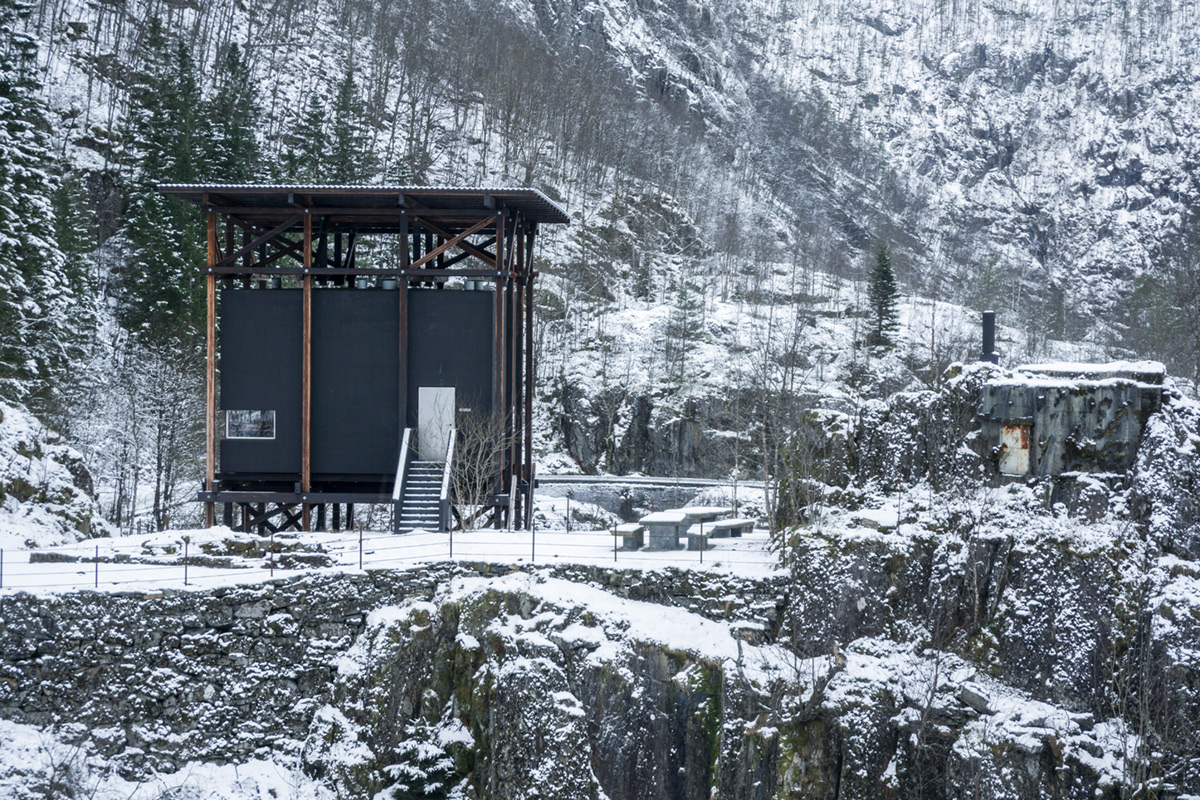
Apart from the Memorial Steilneset Peter Zumthor designed also new facilities at Allmannajuvet – the former zinc mines: an exhibition gallery to show the history of the mines, a café, service facility and parking for visitors. © Photo: Fredrik Fløgstad / Statens vegvesen
KW: There are definitely more tourists visiting Vardø. That is evident in the hotel bookings, which have increased by around thirty per cent. The memorial is of importance to the locals, too. Many people who were burnt at the stake have living descendants now. For them, the memorial is a kind of a cemetery. In addition, many school classes visit the Steilneset Memorial to learn more about the witch-pursuit in Vardø in the 17 th century.
FH: Have you also achieved the goal of increasing tourism along the eighteen National Tourist Routes?
KW: Generally, more tourists visit Norway. And Norwegians, too, most often spend their holidays in their own country. As far as the eighteen National Tourist Routes are concerned, we have noted that some of them attract more tourists than before—others do not yet. In recent years, we have gained interest for our scenic routes model from several countries including Brazil, Portugal, Italy, and South Korea.

The viewing point at Askevågen provides a 360-degree view of the ocean, the archipelago and the mountainous shore. Photo: Werner Harstad / Statens vegvesen
Knut Wold is a Norwegian sculptor. He studied at Alanus Hochschule der Künste and Hochschule der Künste, Berlin. Knut Wold frequently works with objects in large masses of only partially worked stone. He was an organiser and participant of the symposium Norge, stone, Lavik, with Makoto Fujiwara (1985–2011), and of site-specific projects, Hedemarken, with Wenche Kvalstad Eckhoff and Finn Aage Andersen (1991–1999). He is an art consultant and curator for the Directorate of Public Roads, the National Tourist Routes in Norway. He worked as a curator for the Detour exhibitions in Europe and the USA and The Witch Trial Memorial in Vardø with Peter Zumthor and Louise Bourgeois (2006–2015), and for Views , Museum of Architecture in Oslo. From 2014–2015, he was member of the Commission for six sculptures along E6 Minnesund – Stange.
Franziska Herren has a background as an historian and film scientist. She was member of the organising committee of the Swiss Youth Film Festival and was twice in the jury of the film festival Swiss-Movie in Spiez. In 1999, she participated in a photography project which resulted in the book Tagebuch published in the edition Patrick Frey. She works as a communication specialist, writer, and editor. As student of the Postgraduate Programme in Curating at the ZHdK, she researches the significance of fictional films in historic contexts.
[1] Jan Andresen, Foreword in Peter Zumthor et al., Louise Bourgeois and Peter Zumthor: Steilneset Memorial: The Possessed, the Damned and the Beloved (Oslo: Forlaget Press, Published in cooperation with the Norwegian Public Roads Administration, 2016), 7.
[2] Norwegian Public Roads Administration, National Tourist Routes, Varanger Museum, eds., Steilneset. Memorial to the Witches burned in Finnmark, Guidebook (Vardø: Varanger Museum IKS, 2013), 2.
[3] Liv Helene Willumsen, “Relations between 17 th -Century Witchcraft Trials in Scotland and Finnmark, Northern Norway,” in Heinz Sieburg, Rita Voltmer, and Britta Weimann, Hexenwissen. Zum Transfer von Magie- und Zauberei-Imaginationen in interdisziplinärer Perspektive (Trier: Paulinus, 2017), 103.
[4] Svein R ønning , “The Damned, the Possessed and the Beloved” , i n Zumthor et al., Louise Bourgeois and Peter Zumthor: Steilneset Memorial , 14.
[5] Klaus Englert, “Eiskalte Linie und Feuerpunkt,” Tec21 , November 11, 2014.
[6] Peter Zumthor, 2002–2007, Buildings and Projects, Volume 4 (Zurich: Scheidegger & Spiess, 2014), 171.
Centres⁄Peripheries – Complex Constellations
By ronald kolb, camille regli, dorothee richter, centres/peripheries—complex constellations, by christine maria kaiser, urban villages within the megalopolis of shenzhen: a (de)centralised driver for urban change, by kristina grigorjeva, far away, so close: between congiunta and piz linard, by heike biechteler, the zuoz case, by marco meuli, curating otherness. a selective reading of the diaspora pavilion at the 2017 venice biennale, by camille regli, the repatriation of the white cube: how should the rural capitalise on art a conversation with renzo martens, artistic director of the institute for human activities, by ella krivanek, interview with gabi ngcobo, by giovanna bragaglia, kacey wong: art and resistance, by miwa negoro, poetics of topological secrecy. an interview with lukas sander, by oliver rico, interview with olaf kühnemann, from an imaginary interview with gregory sholette, by anastasia chaguidouline, "anxiety now prevails" a conversation with dmitry vilensky, by francesca ceccherini and noriko yamakoshi, interview with raqs media collective, by pongpan suriyapat, interview with jittima “len” pholsawek, by carolina sanchez, interview with the founders of post-museum: jennifer teo and woon tien wei, by domenico roberti & eveline mathis, interview with anuradha vikram – 18th street arts center, los angeles, by beatrice fontana, a conversation with lisa biedlingmaier about the kunstverein wagenhalle e.v./ container city, by paola granati & ronny koren, interview with dena beard, by domenico ermanno roberti, interview with montecristo project, by gözde filinta, “who no know, go know”: how to shift knowledge about/of africa interview with stacy hardy – chimurenga magazin, by jan sandberg, encounter with finnish artist and curator ritva kovalainen, by maya bamberger, a momentary centre of the world a conversation with curator damian christinger on assembleia mothertree, zurich, by dorothee richter, interview with marta rodriguez maleck, camille regli, la quadreria di anita spinelli: a place where silence and dynamism prevail interview with maria-cristina donati, by damian christinger, the gaze of the black madonna. a political conversation with theaster gates.
oncurating.org is an independent international journal (both web and print) focusing on questions around curatorial practise and theory.
ON CURATING.org Pfingstweidstrasse 96 8005 Zürich [email protected]
Supported by the Postgraduate Programme in Curating, Institute for Cultural Studies in the Arts (ICS), Zurich University of the Arts (ZHdK)
Contact Imprint Legal Notes and Privacy Policy
- Hispanoamérica
- Work at ArchDaily
- Terms of Use
- Privacy Policy
- Cookie Policy
- Architecture City Guide
Milan Architecture City Guide: 15 Must-See Landmarks and 20 Contemporary Attractions in Italy's Fashion Capital

- Written by Hana Abdel
- Published on April 05, 2024
A global and cosmopolitan city, Milan is an uncontested mainstream fashion and economic center, widely coveted by worldwide visitors. The second most populated city in Italy , it hosts some of the world's major fashion and design-related events. Milan also houses prestigious educational institutions, many of which are renowned for heritage and conservationist specialties. Its cultural and design relevance cannot be understated as more and more creators are relocating and setting up shop in this booming creative hub.
The city's most recognizable tourist attractions are the renowned gothic Duomo di Milano, Santa Maria delle Grazia, or the Galleria Vittorio Emanuele II, amongst other classical and baroque sites. Milan also houses some of the boldest and most experimental modern and contemporary buildings that highlight the marriage of the beautifully crafted and often ornamental heritage with the modern, post-modernist, and contemporary monuments that make up its unique style.

The following list showcases the historically sensitive architecture type seen in iconic modern and contemporary buildings and spaces, providing a good starting point for a riveting visit to Milan . It includes must-see landmarks and contemporary attractions from renowned local and international architects such as Aldo Rossi, Gio Ponti, Stefano Boeri , Mario Cucinella , Zaha Hadid , Grafton Architects , Herzog & de Meuron , and Foster and Partners, amongst others.
Must-See Iconic Buildings
Duomo di milano / simone da orsenigo.

Galleria Vittorio Emanuele II / Guiseppe Mengoni

Torre Velasca / BBPR

Gallaratese Quarter / Aldo Rossi & Carlo Aymonino

IULM_Milan / 5+1AAAlfonsoFemiaGianlucaPeluffo

Pirelli Tower / Gio Ponti, Pier Luigi Nervi

RCS Building / Stefano Boeri Architetti

Universita Luigi Bocconi / Grafton Architects

Bosco Verticale / Boeri Studio

Feltrinelli Porta Volta / Herzog & de Meuron

Gino Valle Square / Valle Architetti Associati

Gucci Hub / Piuarch

Cascina Merlata Residential Development / Mario Cucinella Architects

Fondazione Prada / OMA

Generali Tower / Zaha Hadid Architects

New Attractions
Apple piazza liberty / foster + partners.

New Urban Campus for Bocconi University / SANAA

Collegio di Milano / Piuarch

Citylife Apartments / Zaha Hadid Architects

Bun Milan Restaurant / Masquespacio

Marsotto Milan Showroom / nendo

Residenze Carlo Erba / Eisenman Architects + Degli Esposti Architetti + AZstudio

MEET Digital Arts Center / Carlo Ratti Associati

Residential Building Canonica / deamicisarchitetti

Bally Flagship Store Milan / Casper Mueller Kneer Architects

Camparino in Galleria Bar / Lissoni Casal Ribeiro

forte_forte milano / forte_forte

Motta Milano 1928 / Collidanielarchitetto

M89 Hotel / Piuarch

Base - Center For Culture And Creativity / Onsite Studio

Bibilioteca degli Alberi Park / Inside Outside Architecture

Fondazione Luigi Rovati / Mario Cucinella Architects

PAN Bakery Milano / studio wok

Pharo Office Building / Park Associati

San Raffaele Hospital / Mario Cucinella Architects

We invite you to visit our list of Architecture City Guides .
Editor's Note: This article was originally published on February 01, 2023.
Image gallery

- Sustainability
想阅读文章的中文版本吗?

米兰城市指南,在意大利的时尚之都打卡 20 个项目
You've started following your first account, did you know.
You'll now receive updates based on what you follow! Personalize your stream and start following your favorite authors, offices and users.

COMMENTS
Abstract. This article argues the case for art tourism as a new field of tourist studies. At present, art tourism is currently obscured under cultural tourism's voluminous bounds - which are as inappropriate as they are unwieldy and overloaded. More specifically, it cannot adequately contain art tourism's distinctive origins, forms of ...
The tour weaves participants by 17 art pieces over a path of 2.6 miles. The pieces on this tour are either best seen at night because of lighting fixtures or can be better appreciated. Consider lighting your public art pieces with colored spotlights to bring a different view for an after hours crowd and is a great tourist attraction.
Other favorites include Nancy Holt 's Sun Tunnels (1973-76) in Wendover, Utah; Michael Heizer 's Double Negative (1969) near Overton, Nevada; Walter de Maria 's Lightning Field (1977)—which you'll need to reserve well in advance via Dia —in Quemado, New Mexico; Ugo Rondinone 's Seven Magic Mountains (2016) in Las Vegas, Nevada.
Various artistic initiatives are paving the way for sustainable tourism by promoting cultural exchange and supporting local communities. Here are a few notable examples: 1. Street Art in Urban Spaces. Street art has become a powerful form of artistic expression that can transform urban spaces and engage both locals and tourists alike.
A small town that prioritizes art. Eureka Springs. In the middle of the Ozarks is the small, eclectic town of Eureka Springs. The town is nestled in the mountains and lined with local art, galleries, and shops. The town is an art colony and is home to around 300 artists, which is about 15% of the town's population!
Cape Town, South Africa. Rising from the Victoria & Alfred Waterfront, with Table Mountain as a backdrop, is the world's largest museum devoted to contemporary African art: the Zeitz Museum of Contemporary Art Africa, commonly known as Zeitz MOCAA.First things first, the museum itself is a marvel, a towering structure revamped from the historic Grain Silo Complex with an interior that looks ...
This article argues the case for art tourism as a new field of tourist studies. At present, art tourism is currently obscured under cultural tourism's voluminous bounds - which are as inappropriate as they are unwieldy and overloaded. More specifically, it cannot adequately contain art tourism's distinctive origins, forms of experience ...
While famous landmarks and museums remain significant attractions, street art adds a layer of authenticity and cultural immersion to a destination. Tourists now seek out street art districts and guided tours, engaging with the local art scene and connecting with the community. ... The rise of street art tourism has had a positive impact on ...
Mural tourism, also known as street-art tourism, promotes colorful masterpieces created by a variety of established and emerging local artists as tourist attractions. Murals beautify cities with visually stunning paintings, culture, and art-focused tourism, which has become increasingly popular as modern-day tourists seek spots for Instagram ...
Domestic arts tourist definition. In this research, a domestic arts tourist is defined as a resident of Australia who did at least one of the following while on a daytrip or overnight trip within Australia: attended theatre, concerts or other performing arts. visited museums or art galleries.
Introduction. Art tourism in rural destinations in Japan has received increased attention in both media and academia. While this boom has been triggered by two major large-scale art festivals that are conducted on a regional scale and in a regular cycle in the 21 st century, art and cultural tourism have formed an important part of regional development and revitalization strategies for over 30 ...
Art tourism is a form of travel that revolves around engaging with artistic and cultural activities, in touristic or historical settings. Sometimes referred to as creative tourism, It involves visiting destinations that also feature art display. It offers a unique travel experience and con ...
Best Places to Stay. The Salvador Dali Museum is a gallery where visitors of all ages can appreciate art. It houses the largest collection of the Spanish surrealist painter's works outside of Europe, with more than 2,000 works of art that include oils, watercolors, sketches, sculptures and other objects. Of the 18 "Masterworks" Dalí ...
Other activities in the schedule include spear-throwing and painting classes, foraging for edible plants, learning about First Nations storytelling and art, all against the backdrop of the waters ...
Awaji Yumebutai. Japanese architect Tadao Ando's most ambitious project, Awaji Yumebutai covers an area of 2.3 million square feet, and had been used to obtain landfill for the Kansai ...
2. Le Bonheur de vivre, also called The Joy of Life. The Barnes Museum, Philadelphia. Home to the iconic Philadelphia Museum of Art, the Rodin Museum, and now the Barnes Foundation, Philadelphia's Museum district deserves months to explore. But The Barnes is an incredible place to start.
He was an organiser and participant of the symposium Norge, stone, Lavik, with Makoto Fujiwara (1985-2011), and of site-specific projects, Hedemarken, with Wenche Kvalstad Eckhoff and Finn Aage Andersen (1991-1999). He is an art consultant and curator for the Directorate of Public Roads, the National Tourist Routes in Norway.
The Colosseum in Rome, Italy, with 7.4 million [citation needed] tourists, is one of the most popular tourist attractions in the world. The Great Wall of China, a popular tourist attraction. The Taj Mahal in Agra, India, a popular tourist attraction. More than 7-8 million visit the Taj Mahal each year. The Eiffel Tower in Paris, France, a ...
The city's most recognizable tourist attractions are the renowned gothic Duomo di Milano, Santa Maria delle Grazia, or the Galleria Vittorio Emanuele II, amongst other classical and baroque sites.